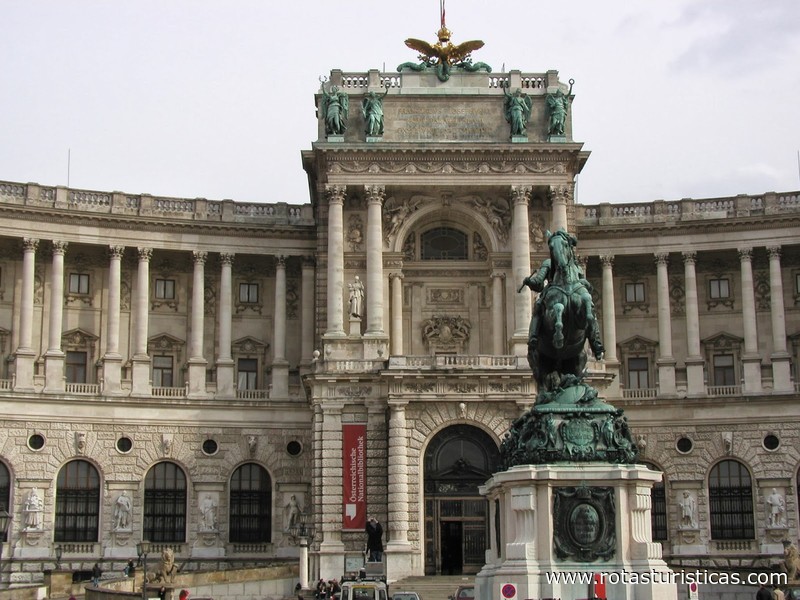Viena, Vienna (state), Austria
Suggest Place to Visit
6201
Track to location with GPS |
 |
The Hofburg, or Hofburg Imperial Palace, is a grand palace in Vienna, Austria. It has its origins in a medieval castle-fortress, dating from the 13th century, being continuously expanded until the beginning of the 20th century. The Hofburg faces the Heldenplatz, ordered to be executed during the reign of Emperor Francisco José, as part of the never completed Kaiserforum.
It was the official residence and center of power for the Habsburgs, sovereigns of Austria between 1278 and 1918, who used it as their main winter residence, while the Schloss Schönbrunn was their favorite palace for the summer. Among the historical personalities who were born in the Hofburg Maria Antonieta stands out in 1755.
With over 2,600 rooms and covering an area of 20 hectares, its architectural grandeur and large gardens dominate the landscape of central Vienna.
Currently, the vast complex houses the Austrian National Library, the Spanish Riding School, the offices of the President of Austria and museums, among which stand out the preserved wings of the old imperial rooms, the rooms used during the Congress of Vienna and the collection of sacred treasures and works of art accumulated by the Habsburgs during almost seven centuries of reign.
In Burgkapelle, the former private court chapel, built in the 13th century, the famous Little Vienna Singers perform every Sunday.
The Hofburg was the seat of power for the kings and emperors of the Holy Roman German Empire in Austria from 1438 to 1583 and from 1612 to 1806, having served, from that date, as the seat of the Emperor of Austria until 1918. Today it is the seat official of the President of Austria.
The oldest parts date back to the 13th century, probably created by the last Babenberg or Otacar II of Bohemia. Previously there was an Austrian landesherr's castle on Am Hof Square, near the Schottenstift abbey.
The Hofburg has been extended over the centuries to include:
several residences (with Amalienburg);
chapels (Hofkapelle, Hofmusikkapelle, Burgkapelle);
museums (the Naturhistorisches Museum and the Kunsthistorisches Museum);
the Imperial Library (Hofbibliothek, now Prunksaal);
the treasure (Schatzkammer);
the national theater (Burgtheater);
the riding school (Hofreitschule); and,
and the horse stables (Stallburg and Hofstallungen).
Numerous architects carried out work on the Hofburg as it was being expanded, namely the Italian architect-engineer Filiberto Luchese (at Leopoldischiner Trakt), Lodovico Burnacini and Martino and Domenico Carlone, the Baroque architects Lukas von Hildebrandt and Joseph Emanuel Fischer von Erlach (na Reichskanzleitrakt and the Winter Riding School), Johann Fischer von Erlach (in the library), and the architects of the grand Neue Burg, built between 1881 and 1913.
The current Schweizerhof ("Swiss Courtyard"), in the shape of a quadrangle, represents approximately the space of the old castle. It was built, in the Renaissance style, during the reign of Emperor Charles V by his brother Fernando, at the time King of the Romans and, later, Emperor Fernando I (from 1556).
It contains the Gothic chapel (built in the 15th century) and the Chamber of the Treasury (a branch of the Kunsthistorisches Museum), which has, among others, the symbols of power of the Holy Roman-German Empire (the Reichskleinodien) and the Austrian Empire. It is also here that the Hofmusikkapelle (Court Music Chapel) has its headquarters. It is on the Schweizertor ("Swiss Gate"), the red and black entrance of this section, that the titles of Emperor Fernando I are listed and the insignia of the Order of the Golden Fleece is displayed. In a side niche is the Schweizerhofbrunnen ("Fountain of the Swiss Courtyard"), from 1552, with the imperial eagle, whose austere basin is made of a white stone, the so-called Kaiserstein ("Stone of the Emperor"), coming from the quarries of Kaisersteinbruch . The fountain was at the end of a canal, already executed in 1534, through which water flowed to the castle from the suburban area of Sankt Ulrich.
Below this wing, the kitchen patio has long been found.
Although not physically connected with the rest of the complex, the Hofburg's Stallburg (Imperial Stables) was originally built for Crown Prince Maximilian II. It is said that Fernando I did not want to house his son under his roof, since Maximiliano had been inclined towards Protestantism.
This structure later accommodated the art collection of Archduke Leopoldo Guilherme, the brother who loved the arts of Emperor Fernando III. This collection would form the heart of the later Kunsthistorisches Museum, established from 1889.
It was only later that this building served to house the imperial horses, and is still used today as the Spanish Riding School (Spanische Hofreitschule).
On the other side of the Schweizertor is Amalienburg. This section of the palace was named after Amalia Wilhelmine, the widow of José I. However, this wing had been in use for more than a century when it received this designation, having been built as a Viennese residence by Emperor Rodolfo II, in style mannerist. Noteworthy is the small tower with its dome and the astronomical clock on its facade. In the center of Amalienhof ("Patio de Amália") there is a Renaissance fountain whose basin is made in kaiserstein.
The connection between the Amalienburg and the Schweizerhof is made by Leopoldinische Trakt ("Leopoldo Wing"), which was built in the 1660s by Emperor Leopoldo I. The architect was Filiberto Lucchese and the execution was in charge of the masters. Italian works Carl Martin Carlone and Dominico Carlone. Roughly speaking, the stones necessary for the construction of this wing came from the Kaisersteinbruch quarry, having been carved by the masters Ambrosius Ferrethi and Camillo Rezi. According to the lists registered in the Camerale books in the archives of the court chamber, kaiserstein was used: for the facade, for the great corbels protruding from the cornice, for the staircase of the time and for the most recent portal.
After the Turkish siege of 1683, the wing was rebuilt by Giovanni Pietro Tencala, being raised with another floor. According to its architecture, the wing continued to present a typical aspect of the late renaissance. In 1752 a veranda was built by the court masons Elias Hügel and Johann Baptist Regondi. It is in this wing that are currently the offices of the President of Austria. The low section of this wing, like that of Amalienburg, served as a huge cellar for the Hofburg.
The Hofbibliothek ("Library of the Court") was originally an independent building located outside the complex, on today's Josephsplatz. The library founded by Emperor Charles VI is the present Prunksaal (Hall of Apparatus) of the Österreichische Nationalbibliothek (Austrian National Library). Its construction was initiated in 1721 by Johann Bernhard Fischer von Erlach and completed after his death in 1723 by his son Joseph Emanuel. This magnificent gallery contains the collection of books by Prince Eugénio de Savoie, a huge frescoed ceiling by Daniel Gran and emperor statues by Paul Strudel, which makes this section of the Hofburg the most significant in artistic terms.
Fischer von Erlach created only a link to the rest of the palace via the Schweizertrakt ("Swiss Wing"), therefore there is no public access to the library, which in reality was conceived from the beginning as an almost public institution. In the ceremonial record of April 23, 1731, the Inspection of the new library was reported by her imperial majesty and by the archduchess. Only in 1733 was a small building adjacent to the Augustinian convent purchased for the construction of the grand service staircase.
The exterior decoration, with figures in the attic, was executed by Lorenzo Mattielli in 1726. He placed a statue of Pallas Athene leading a chariot over the main entrance. Atlas on the left half of the roof supported the globe, flanked by Astronomy and Astrology, and on the opposite side Gaia with the globe, flanked by Geometry and Geography.
Land subscriptions that occurred in the years after 1760 forced some changes made by Nicolaus do Pacassi. As a result of these modifications, the staircase leading to the current Prunksaal was built in 1767, and the polished kaiserstein was also used there for the steps and landing. In 1769 the building was in danger of collapsing due to the weight of the books. Maria Teresa and José II arranged for the consolidation of the building under the supervision of the court's director of constructions, Count Losy von Losymthall, and the court's architect, Baron Pacassi. On this occasion a new open space was created.
In 1904, the Hofbaucomité (Committee of Court Constructions) commissioned the design of an access to the Hofbibliothek from Josefsplatz. The stone works were carried out, partly from old works already existing and partly from new kaiserstein.
Another collaboration project between father and son Fischer von Erlach gave rise to Winterreitschule (Winter Riding School), opposite Stallburg (and where the first Austrian parliament met in 1848) and Reichskanzleitrakt (Wing of the Imperial Chancellery) opposite to Leopoldinische Trakt. The latter was originally planned by Johann Lucas von Hildebrandt and accommodated, in addition to the Reichshofrat (Aulic Council), the Reichsvizekanzler (offices of the Imperial Vice Chancellor), who was, in fact, the Prime Minister of the Holy Roman Empire, a Since the position of Reichserzkanzler (Imperial Archichancellor) - who was represented by the Imperial Vice Chancellor - was held by the Archbishop of Mainz since the Middle Ages. After the end of the Holy Roman Empire, this wing housed the rooms of the Duke of Reichstadt (Napoleon II) and later those of the emperor Francisco José I.
Michaelertrakt (Michael's Wing) was also planned in 1726 by Joseph Emanuel Fischer von Erlach, and serves as a link between Winterreitschule and Reichskanzleitrakt. However, due to the fact that the old Burgtheater (Imperial Theater) rose in that space, these plans remained unfulfilled for more than a century and a half, until Ferdinand Kirschner built the wing between 1889 and 1893, using a slightly altered plan.
More structures and annexes were added successively. Particularly between 1763 and 1769, Nicolaus von Picassi connected one side of the Hofbibliothek with the other parts of the Hofburg and the other with the Augustinerkirche (Church of the Augustinians), thus creating the current Josephsplatz (Joseph's Square), one of the most beautiful places from Vienna. After the renovation of the Albertina Gallery in the 1820s by Joseph Kornhäusel, this section was also linked to the Hofburg.
In 1809, part of the old bastion adjacent to the old castle was demolished in the course of the Napoleonic Wars. In order to obtain the present Ringstraße, new lands were established in which the neoclassical Burgtor (Castle Gate) was incorporated. Within the new walls, built in 1817, three gardens were organized: the Burggarten (the private garden of the Castle), Heldenplatz (Heroes' Square), as a lawn with boulevards, and the Volksgarten (Garden of the People), with Theseustempel (Temple of Theseus), which, together with the Burgtor framework, was designed by Peter von Nobile.
Another addition of this period (already from 1804) is the Zeremoniensaal (Gallery of Ceremonies), by Louis Montoyer, which, at the time, constituted a protruding protrusion of the complex. This was quickly considered unpleasant and called Nase (Nose). However, it is currently fully integrated in Neue Burg (New Castle).
Following the enlargement of Vienna after the demolition of the city walls in the 1860s, the Hofburg had its last major expansion. A Kaiserforum (Imperial Forum) was planned - a structure with two wings to be erected beyond Ringstraße, with two twin museums (the Kunsthistorisches Museum and the Naturhistorisches Museum) as flanks and ending at the old imperial stables (the Hofstallungen, not to be confused with the much older Stallburg) by Fischer von Erlach. The project was led by Gottfried Semper and, later, by Karl Freiherr von Hasenauer. The museums were completed in 1891, but construction of the rest of the forum dragged on slowly. Apart from ostentation, no other function can be found for the huge construction project. In 1913, the southwest wing, Neue Burg (New Castle), was completed. However, the Kaiserforum was never finished. In its place, Heldenplatz and Maria-Theresien-Platz (Maria Teresa Square) were installed.
The wing of the Neue Burg currently houses numerous museums (the Ephesus Museum, the Collection of Weapons and Armors, the Collection of Ancient Musical Instruments and the Museum of Ethnology) as well as reading rooms of the Austrian National Library and the renowned Konferenzzentrum (Center Hofburg International Conferences). Equestrian statues of the two most important Austrian field marshals, Prince Eugénio de Savoie and Archduke Carlos, stand in the focus of Heldenplatz. On March 15, 1938, Adolf Hitler proclaimed Anschluss from the balcony of Neue Burg to Heldenplatz, Austria's entrance to the Third Reich (Deutsches Reich).
Noteworthy is the equestrian statue of Emperor Joseph II, by Franz Anton Zauner, in the center of Josephsplatz, as well as the statue of Francis I in the inner Burghof (Inner Courtyard), by Pompeo Marchesi. After the completion of Michaelerplatze, two sculpted fountains were installed on its facade: Die Macht zur See (The Power in the Sea), by Rudolf Weyr, and Die Macht zu Lande (The Power on Earth), by Edmund Hellmer.
On the night of November 26th to 27th, 1992, there was a big fire in the Hofburg, which originated in the Redoutensäle area, on Josephsplatz. Part of the roof, as well as the upper floor, burned completely. Its renovation was completed in 1997, and the newly reconstructed section currently contains walls and ceilings painted by Josef Mikl.
The museums are managed by Betriebsges.m.b.H., As well as the Schloss Schönbrunn and the Hofmobiliendepot museum. A large part of the building complex has been leased and is used by offices of all types.
In the historic rooms of the Hofburg there are three museums.
The Kaiserappartements (Imperial Apartments), the Sissi Museum and the Silberkammer (Silver Chamber) are among the most visited historical sites in Austria. In the former Habsburg residence it is still possible to visit the original official rooms of Emperor Francisco José I and Empress Sissi.
The former Hofsilber and Tafelkammer offers precious porcelain, glass and silver services belonging to the Habsburgs.
The Schatzkammer
The Schatzkammer (Treasury Chamber) houses treasures of sacred and profane art. It houses the Crown Jewels and the treasures of the Holy Roman Empire and the Austrian Empire.
The Hofburg is so popular and famous that it served as the main reason for one of the most famous collector's silver coins: the 20 euro coin commemorating the Renaissance.
The coin shows the palace Schweizertor. Estportão, as already mentioned above, carries the titles and the coat of arms of Emperor Fernando I. In the coin, it appears flanked by two soldiers of the time as a reminder of the time when Vienna was shaken by the siege of Turkish armies, in 1529, as well as the struggles between Protestants and Catholics during the Reformation.
Schedule:
Monday 09:00 - 17:30
Tuesday 09:00 - 17:30
Wednesday 09:00 - 17:30
Thursday 09:00 - 17:30
Friday 09:00 - 17:30
Saturday 09:00 - 17:30
Sunday 09:00 - 17:30
Comments
We don´t have yet any comments about:
new Castle
new Castle
Be the first to leave a comment as it is very important to inform other people
Outros locais a visitar
Within a radius of 20 km from:new Castle
Collection of Arms And Armor (Viena) |
| 0,0 Km |
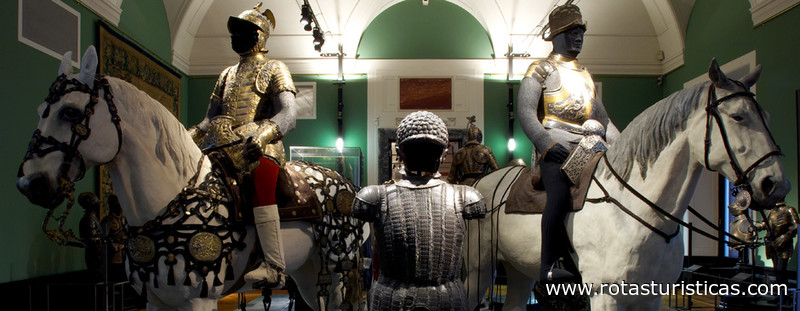 |
Papyrus Museum (Viena) |
| 0,0 Km |
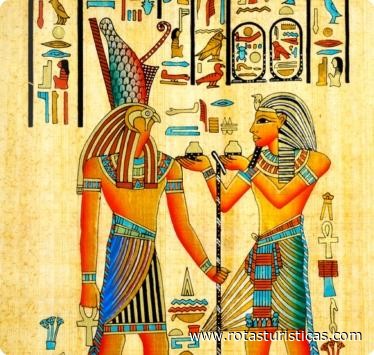 |
Vienna World Museum |
| 0,1 Km |
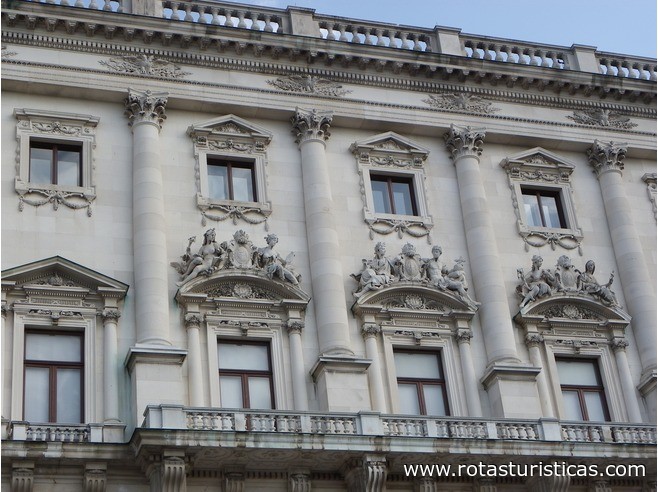 |
Butterfly House |
| 0,1 Km |
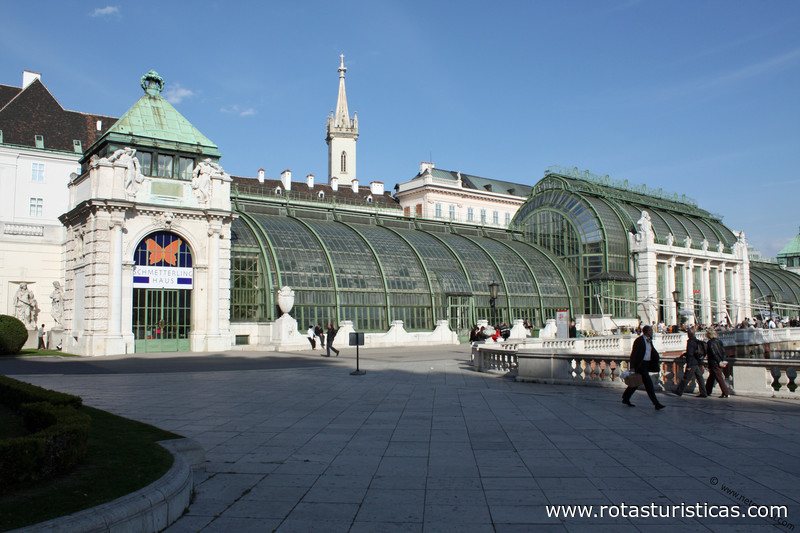 |
Ephesus Museum (Vienna) |
| 0,1 Km |
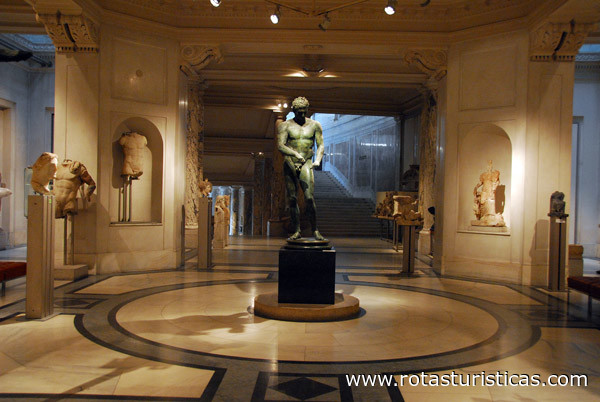 |
Imperial Treasury Vienna |
| 0,2 Km |
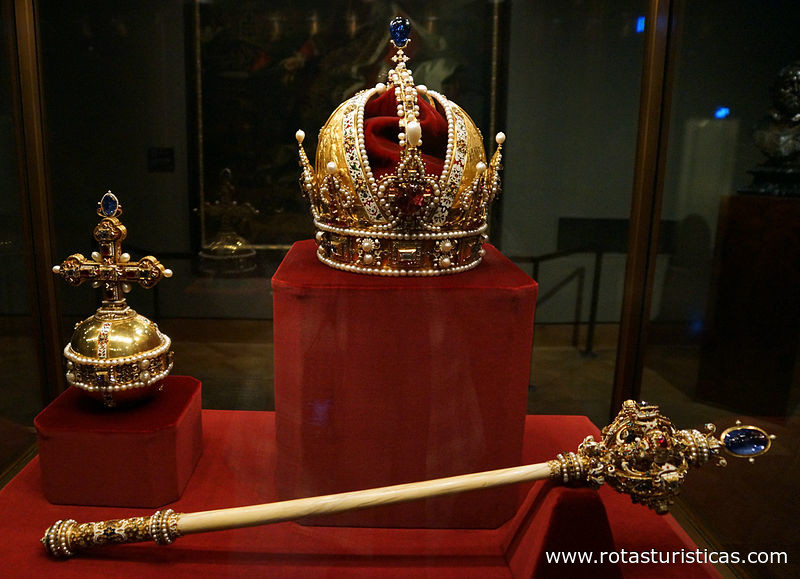 |
Church of the Augustinian Friars (Vienna) |
| 0,2 Km |
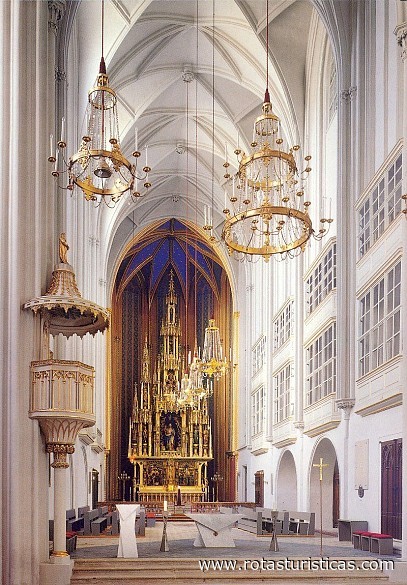 |
Phantastenmuseum (Viena) |
| 0,2 Km |
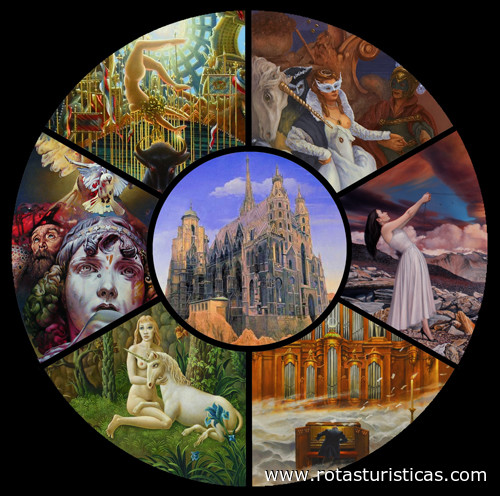 |
Vienna State Opera Museum (Vienna) |
| 0,2 Km |
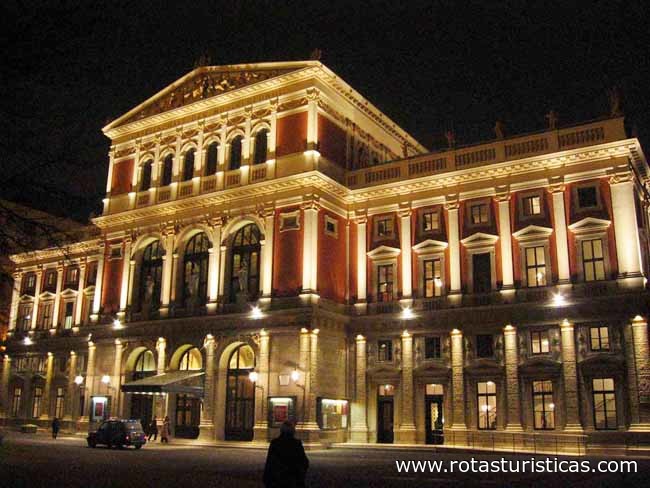 |
Sisi Museum (Viena) |
| 0,3 Km |
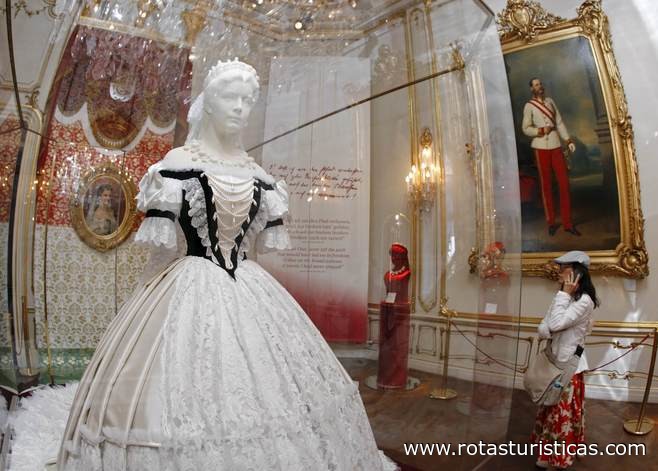 |
Albertina |
| 0,3 Km |
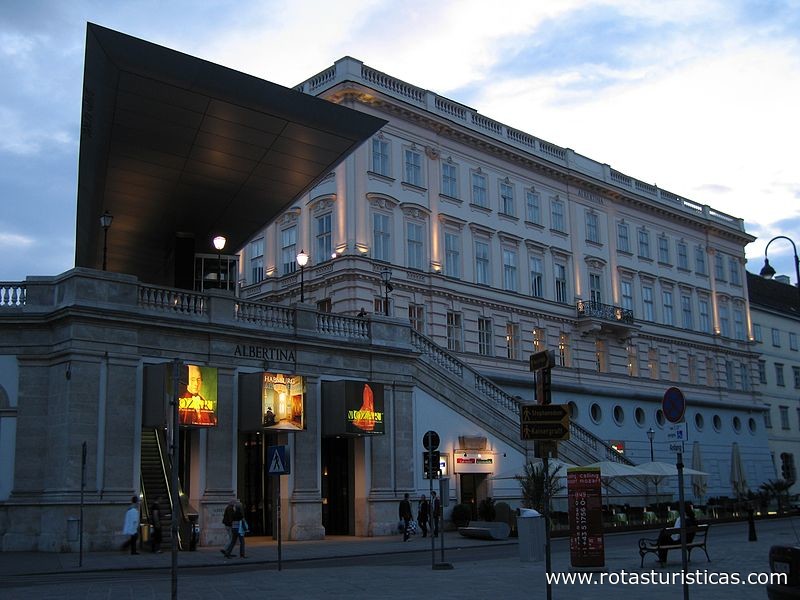 |
Austrian Theater Museum |
| 0,3 Km |
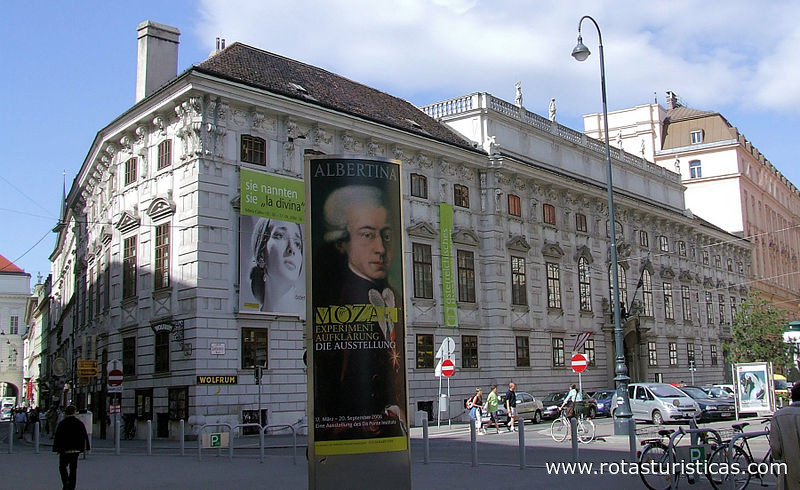 |
Kunsthistorisches Museum |
| 0,3 Km |
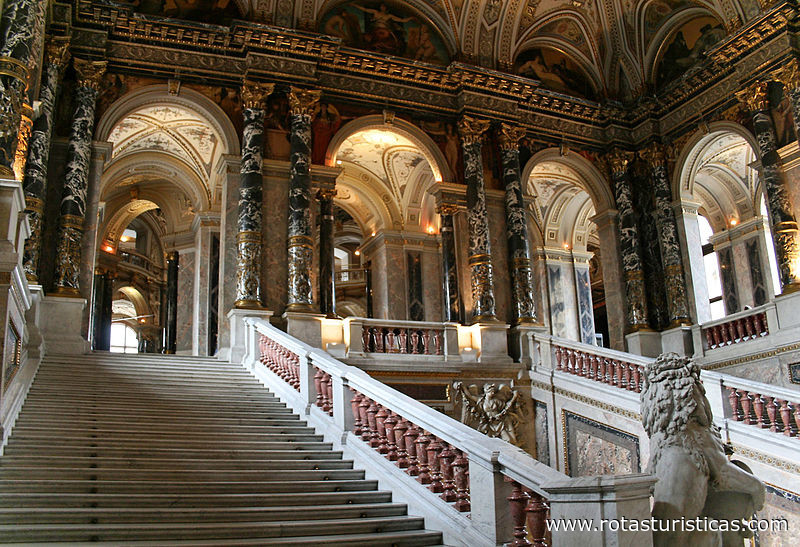 |
Museum of Art History (Vienna) |
| 0,3 Km |
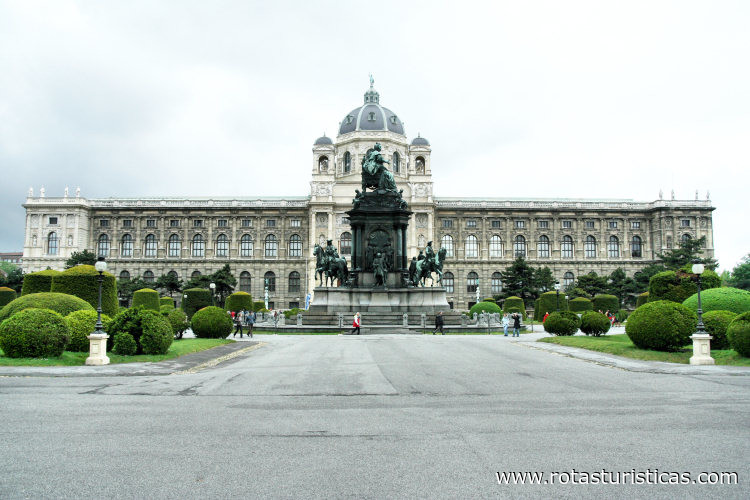 |
Austrian Film Museum |
| 0,3 Km |
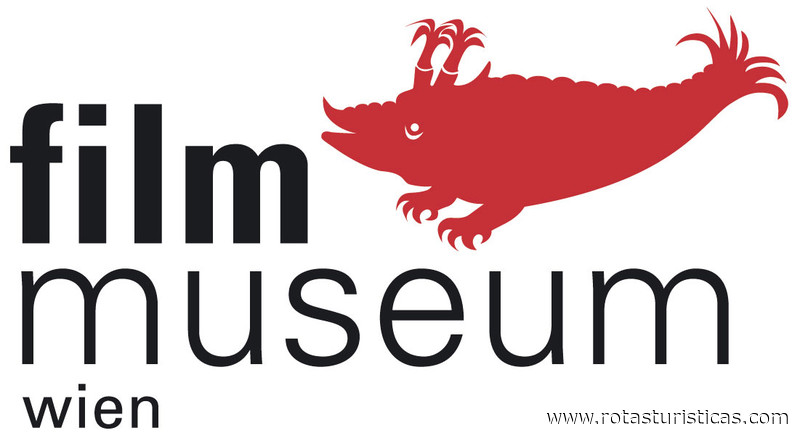 |
Museum of Natural History Vienna |
| 0,4 Km |
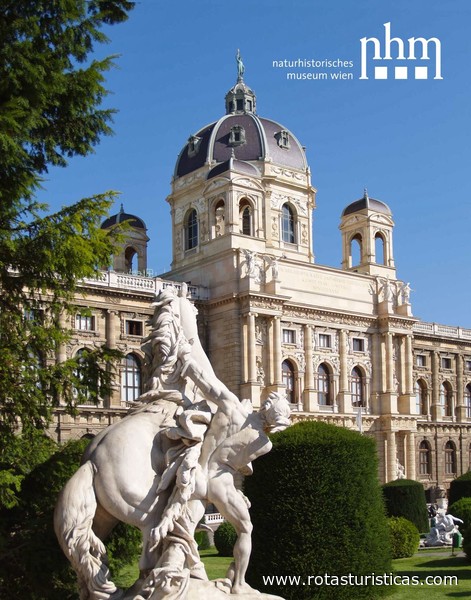 |
Jewish Museum Vienna |
| 0,4 Km |
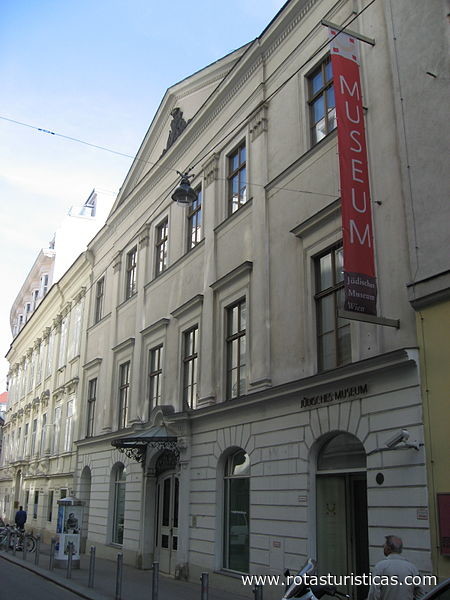 |
Hofburg Imperial Palace (Vienna) |
| 0,4 Km |
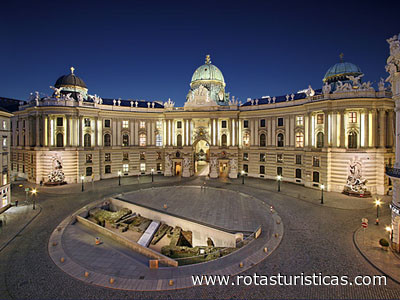 |
Time Travel Vienna (Viena) |
| 0,4 Km |
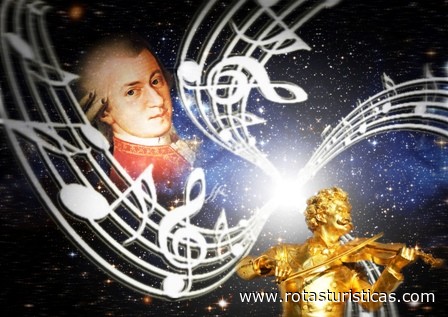 |
Academy of Fine Arts (Vienna) |
| 0,4 Km |
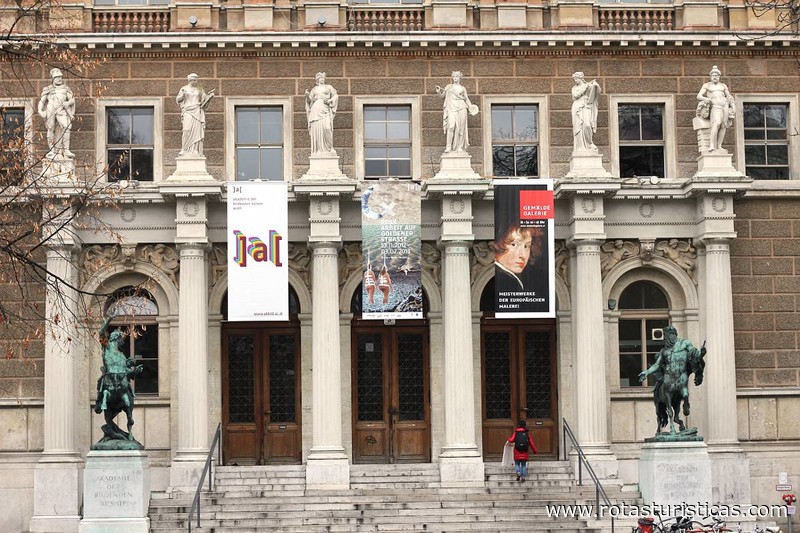 |
Department of Planned Languages And Esperanto Museum |
| 0,4 Km |
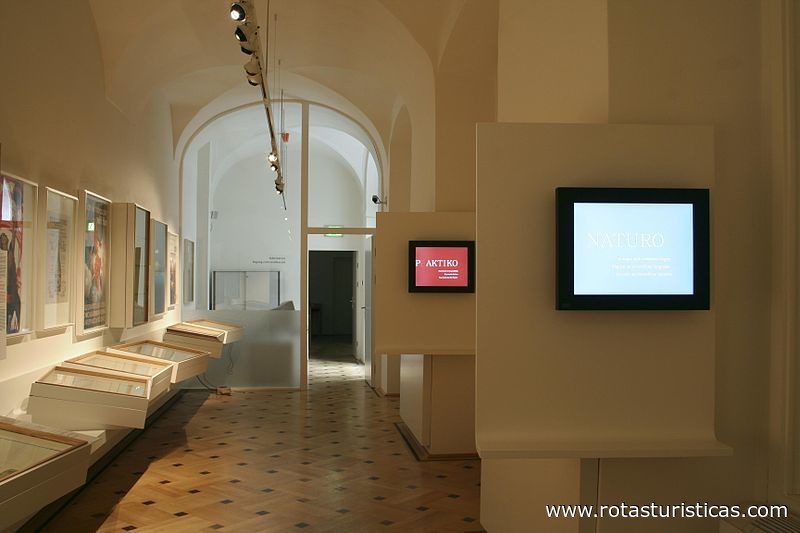 |
Globe Museum |
| 0,4 Km |
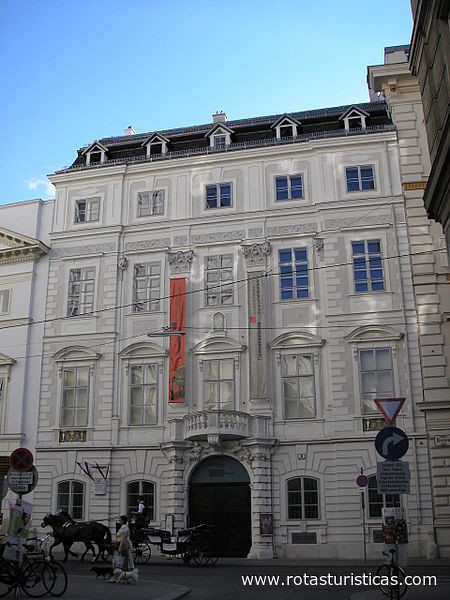 |
Museum Quarter (Vienna) |
| 0,5 Km |
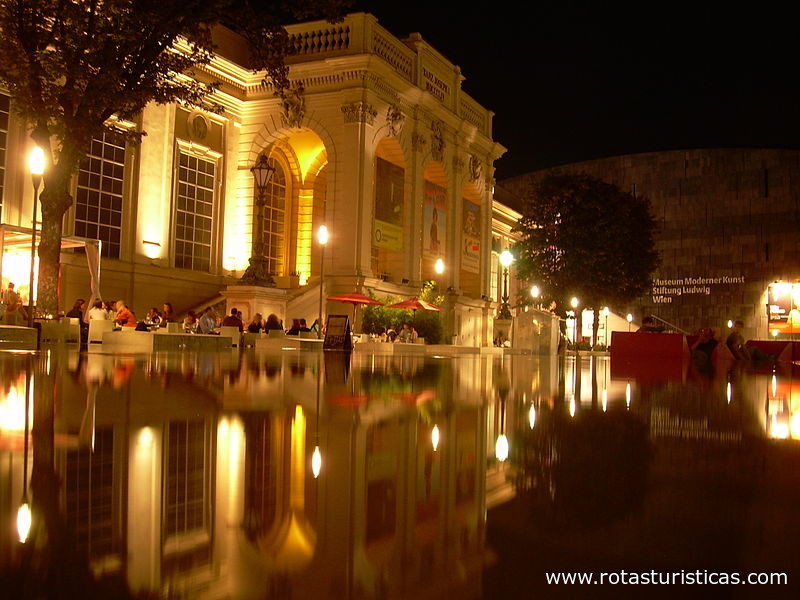 |
Parliament of Vienna |
| 0,5 Km |
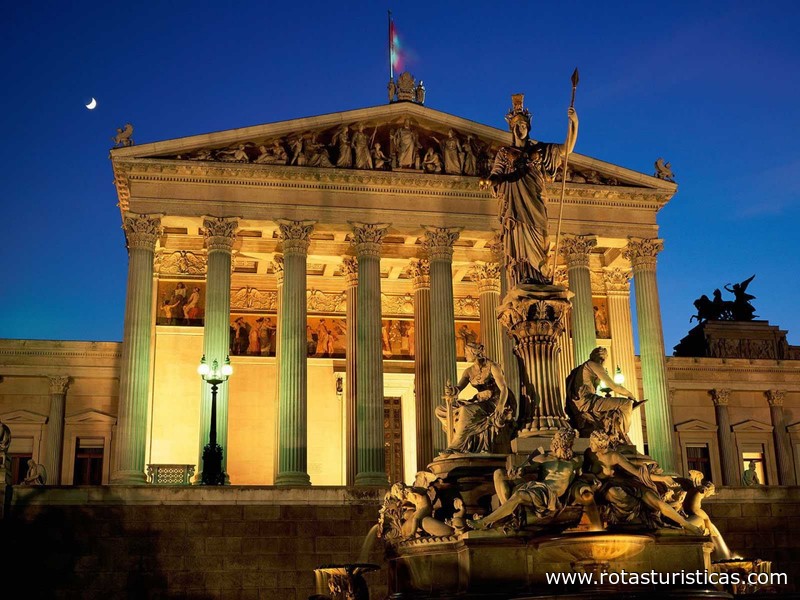 |
Leopold Museum |
| 0,5 Km |
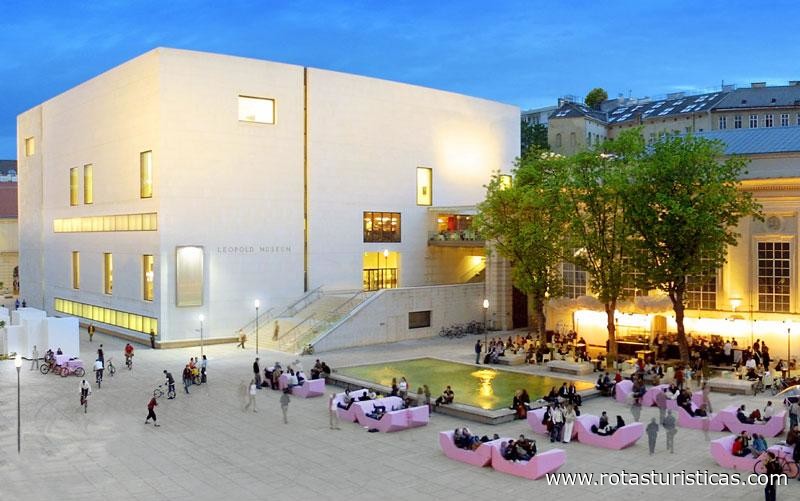 |
Mumok |
| 0,5 Km |
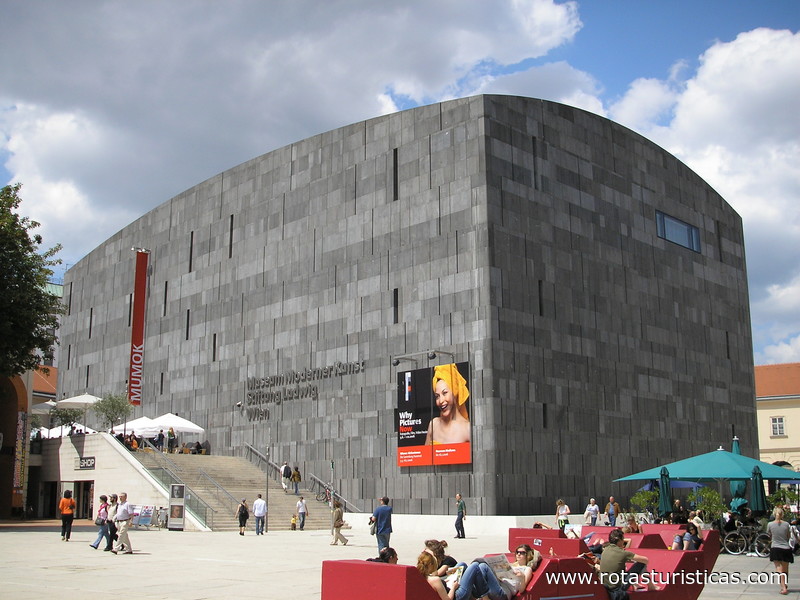 |
Architekturzentrum Wien |
| 0,5 Km |
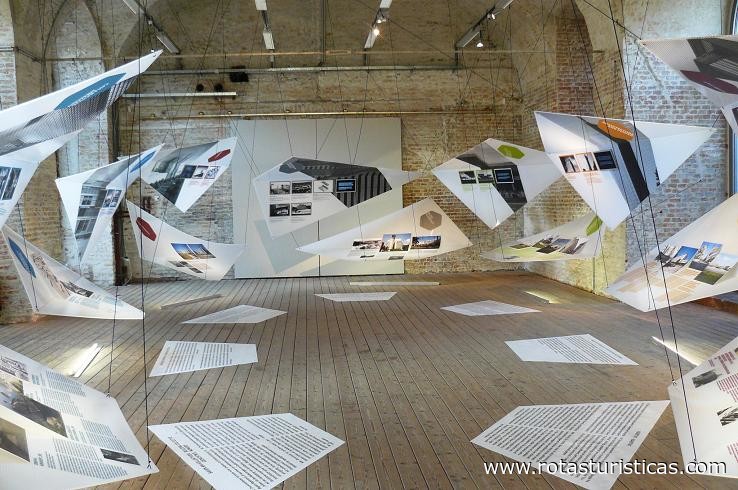 |
Kunsthalle Vienna |
| 0,6 Km |
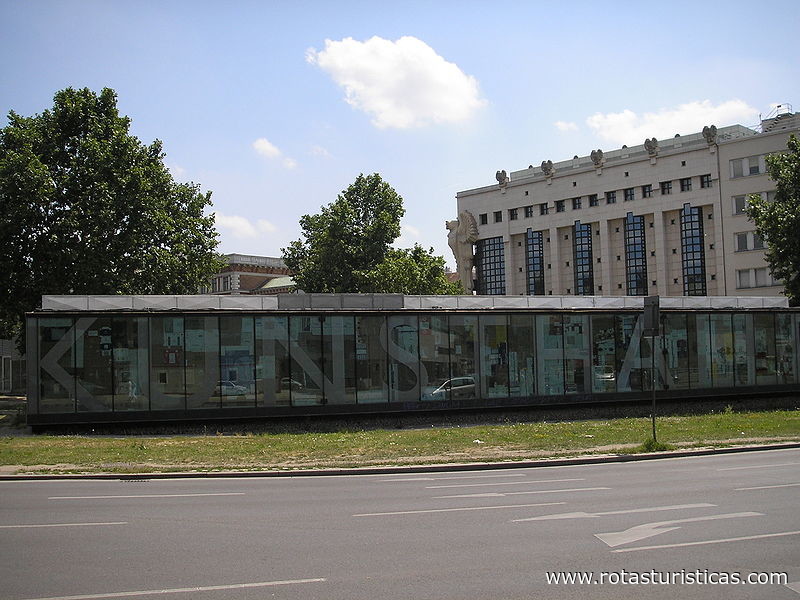 |
Secession Building (Vienna) |
| 0,6 Km |
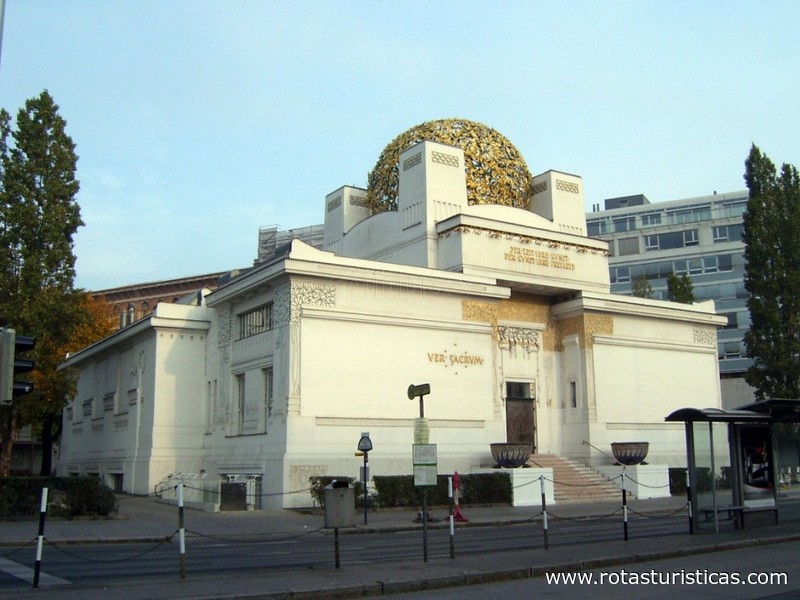 |
National Theater of Vienna (Austria) |
| 0,6 Km |
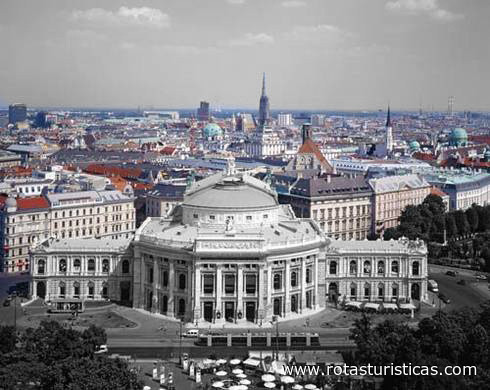 |
House of Music |
| 0,7 Km |
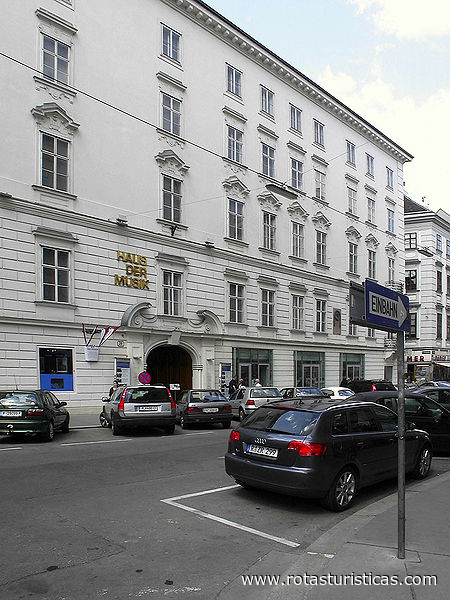 |
St. Stephen's Cathedral (Vienna) |
| 0,7 Km |
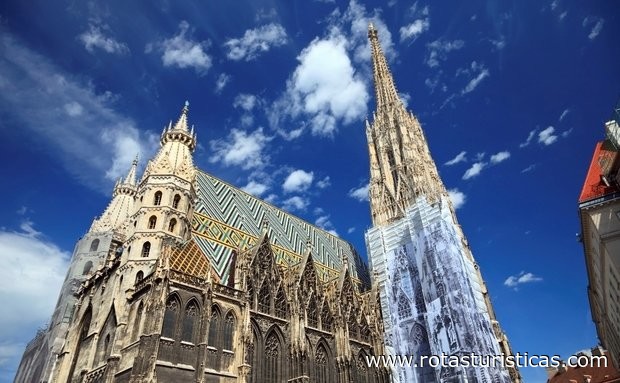 |
Watch museum |
| 0,7 Km |
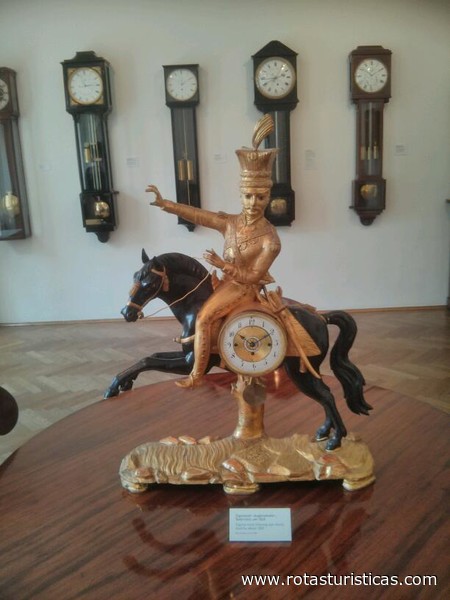 |
Bank Austria Kunstforum Wien |
| 0,7 Km |
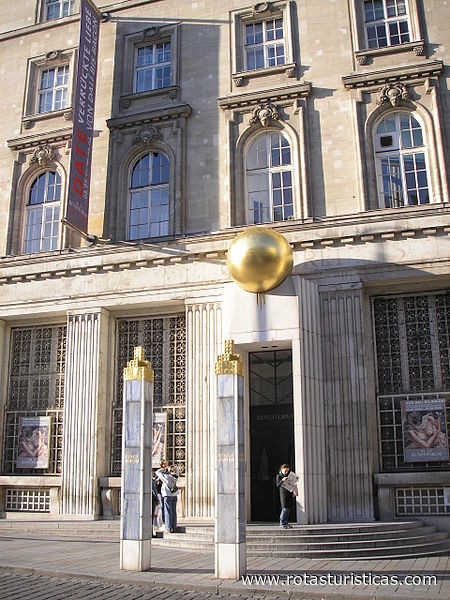 |
Firefighting Museum (Vienna) |
| 0,7 Km |
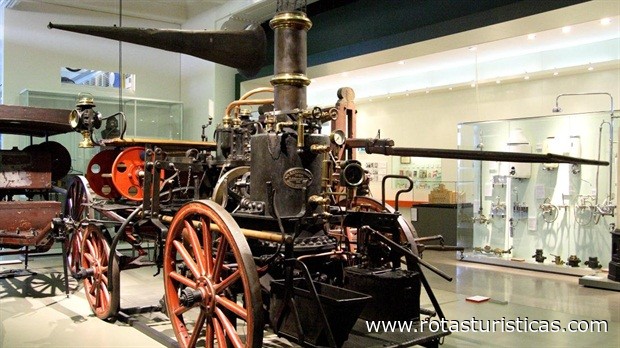 |
Austria |
| 0,7 Km |
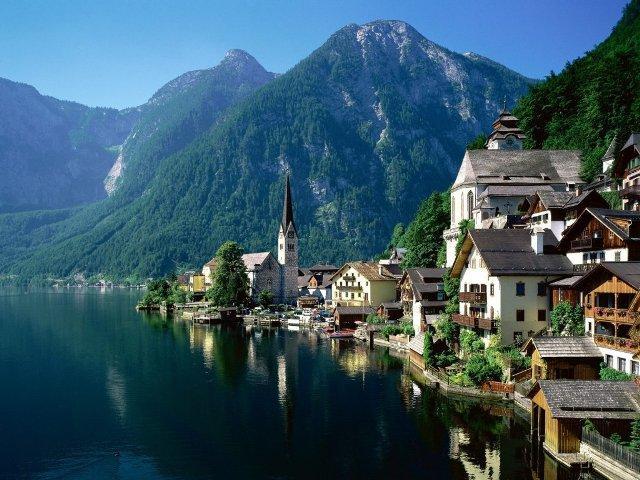 |
Otto Wagner's Stadtbahn Pavilions |
| 0,7 Km |
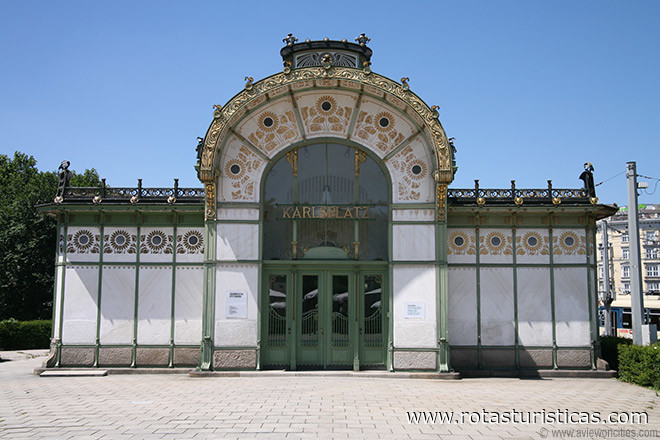 |
St. Stephen's Cathedral (Vienna) |
| 0,7 Km |
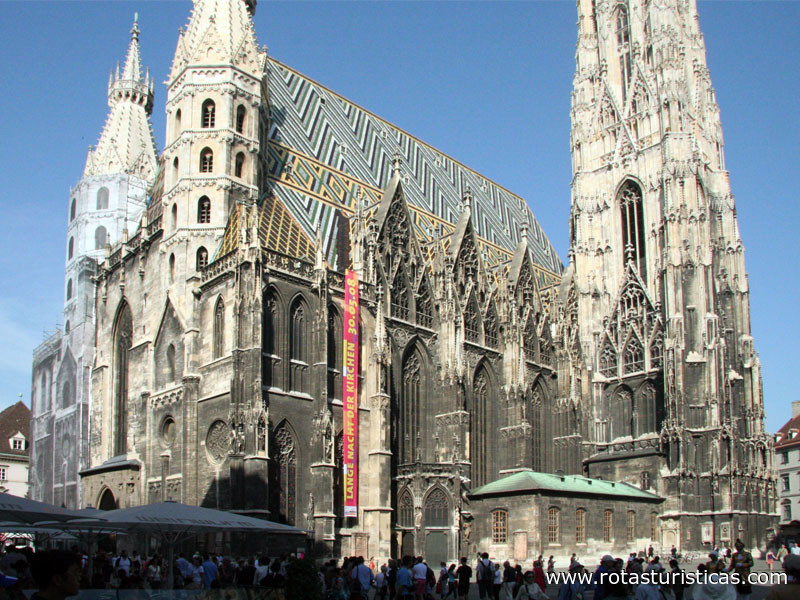 |
Artist house |
| 0,7 Km |
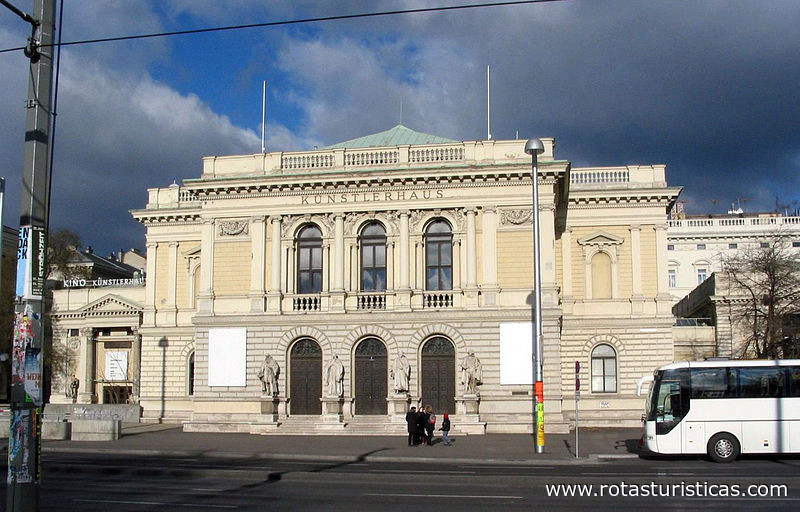 |
Museum at The Abbey of The Scots (Viena) |
| 0,7 Km |
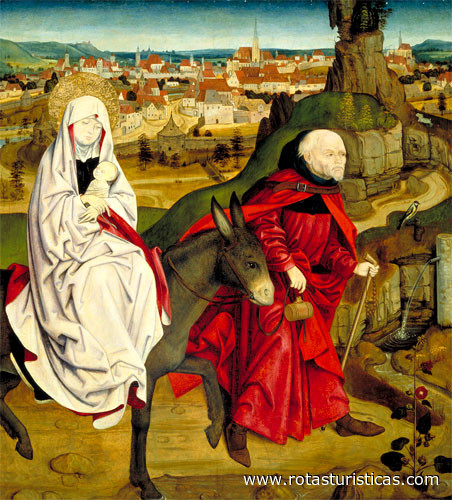 |
Artist House (Vienna) |
| 0,7 Km |
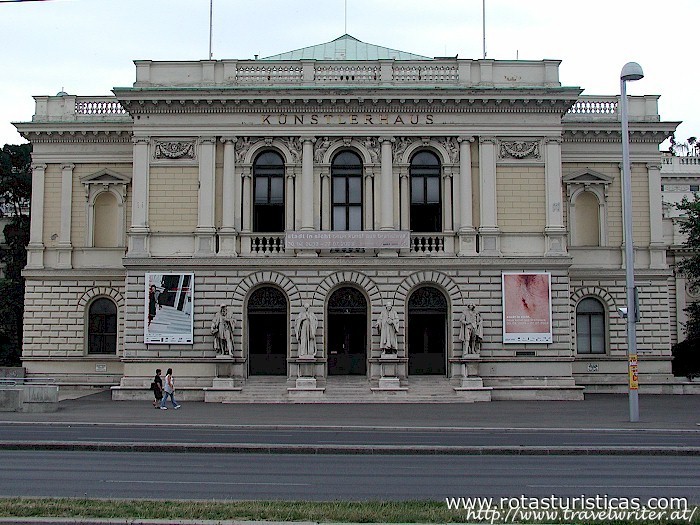 |
House of The Neidhart Frescoes (Viena) |
| 0,8 Km |
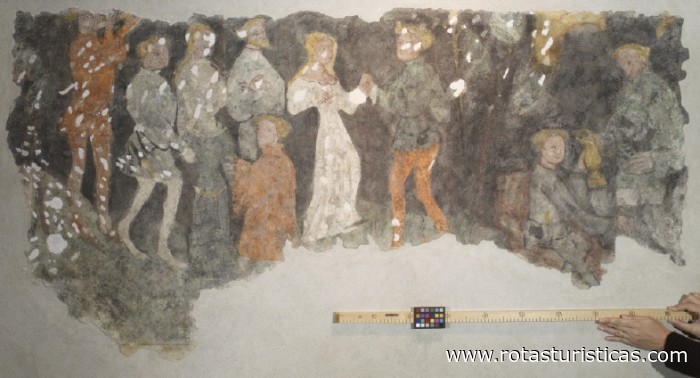 |
Museum of The Cathedral (Vienna) |
| 0,8 Km |
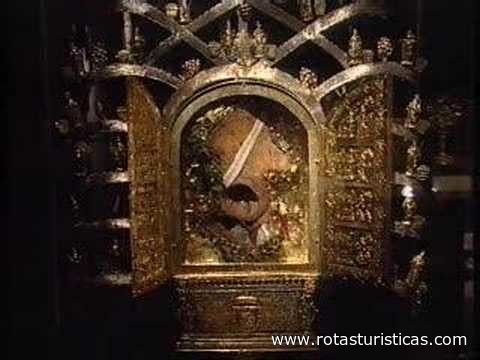 |
Karlsplatz (Vienna) |
| 0,8 Km |
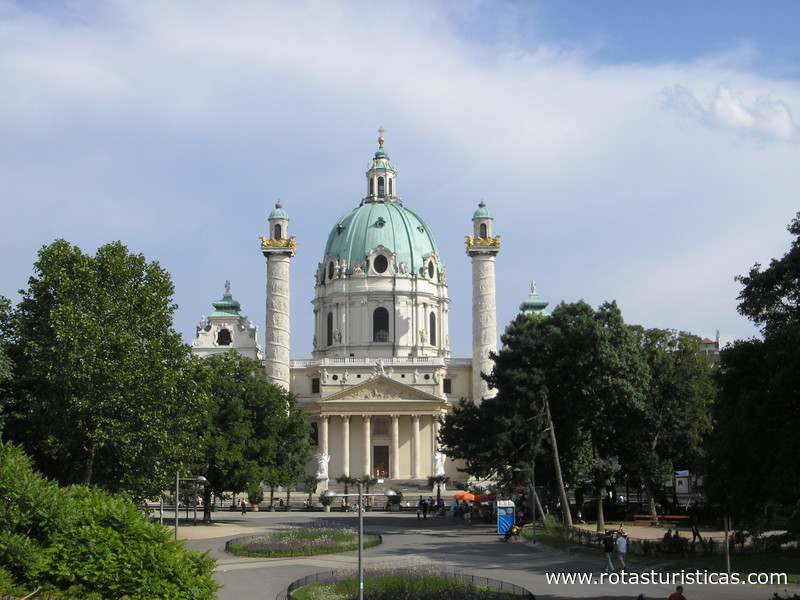 |
Beethoven Pasqualatihaus |
| 0,8 Km |
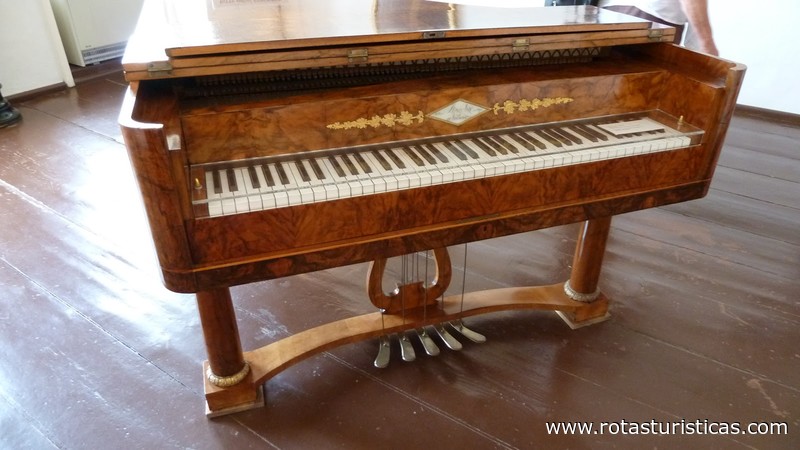 |
Mozarthaus Vienna |
| 0,8 Km |
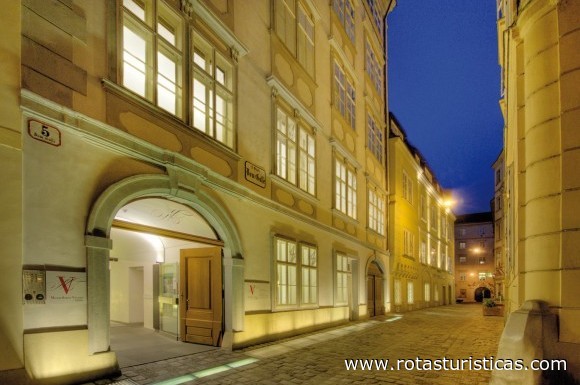 |
Roman Museum at The Hohen Markt (Viena) |
| 0,8 Km |
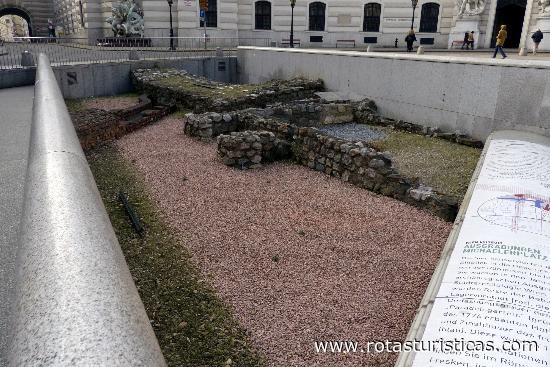 |
Anker Clock (Vienna) |
| 0,9 Km |
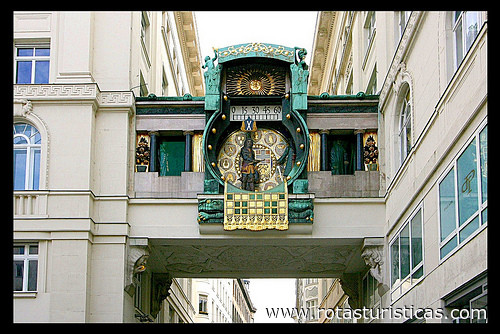 |
University of Vienna (Vienna) |
| 0,9 Km |
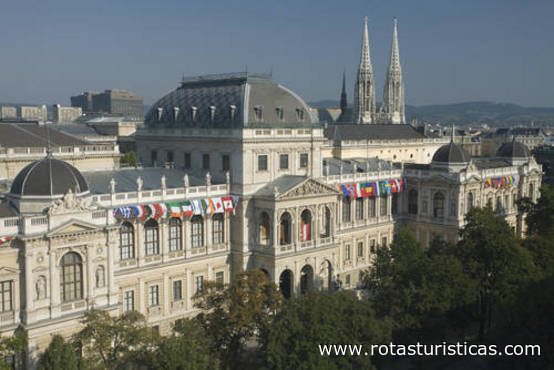 |
Vienna Museum Karlsplatz |
| 0,9 Km |
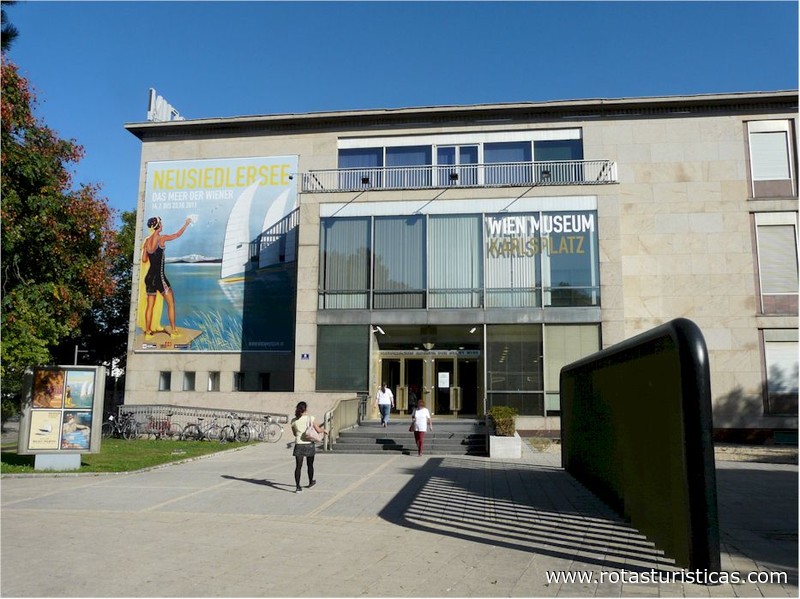 |
Generali Foundation |
| 1,0 Km |
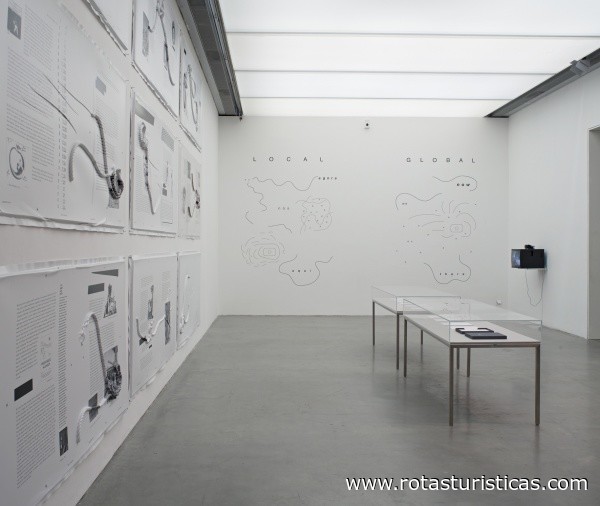 |
The Third Man Museum (Vienna) |
| 1,1 Km |
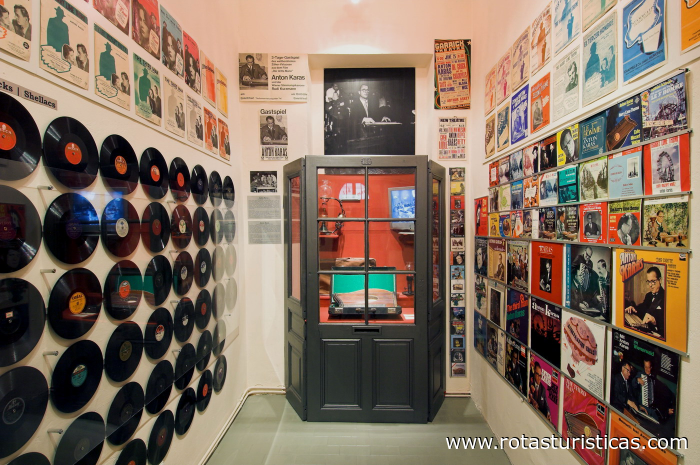 |
Old bakery (Vienna) |
| 1,1 Km |
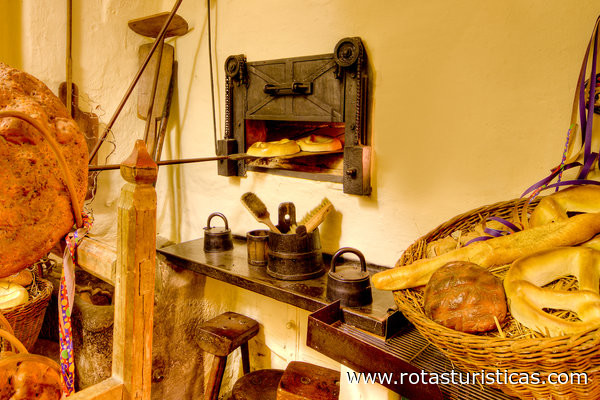 |
Old Forge (Vienna) |
| 1,1 Km |
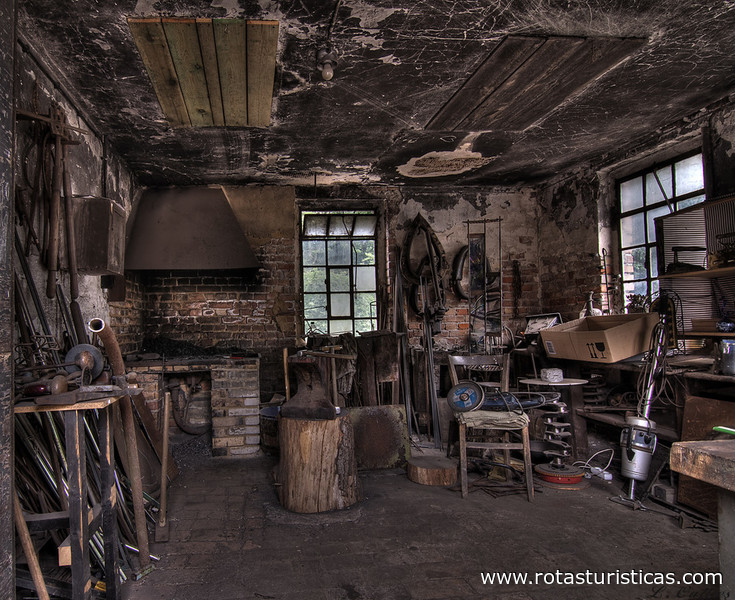 |
Johann Strauss Monument (Vienna) |
| 1,1 Km |
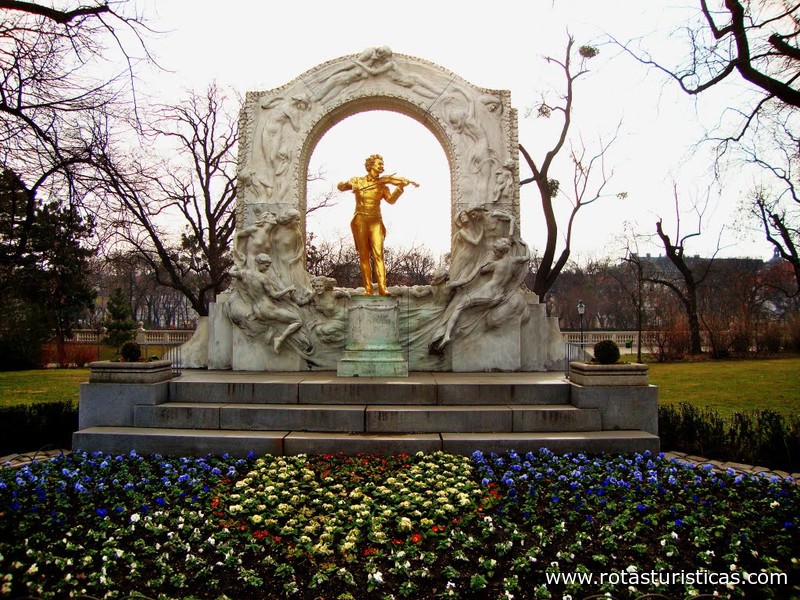 |
Arnold Schönberg Center |
| 1,2 Km |
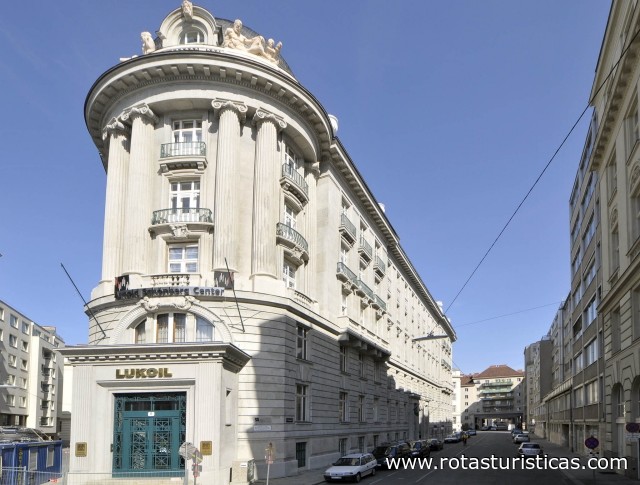 |
House of the Sea |
| 1,2 Km |
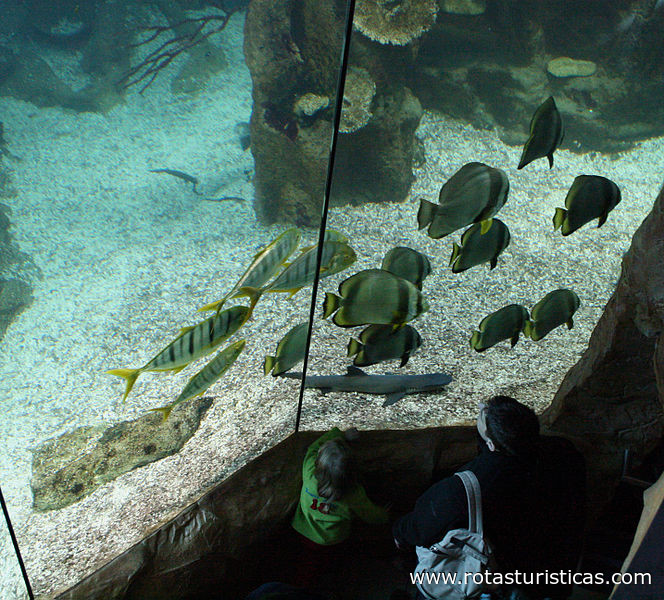 |
Torture Museum (Vienna) |
| 1,2 Km |
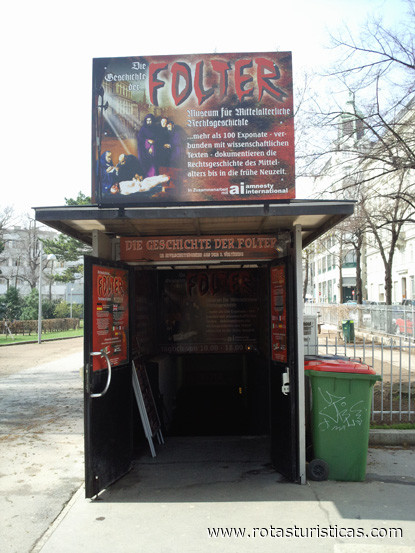 |
River Danube (Vienna) |
| 1,3 Km |
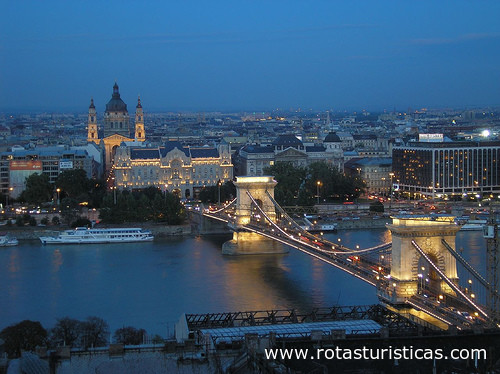 |
Wagner Werk (Vienna) |
| 1,3 Km |
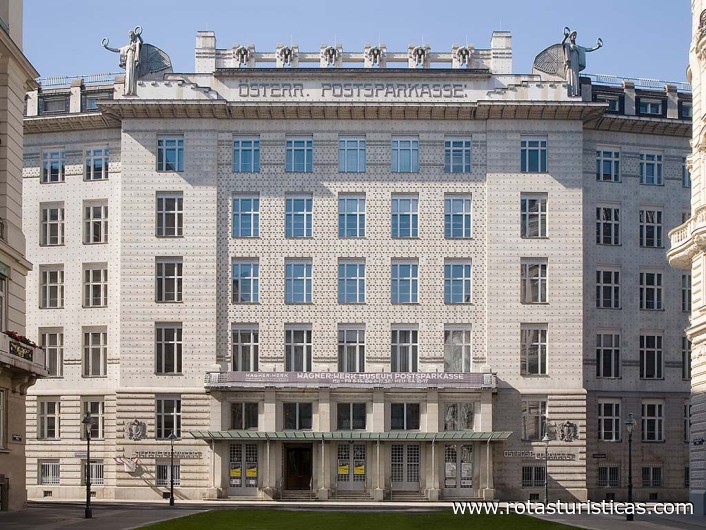 |
Sigmund Freud Museum |
| 1,5 Km |
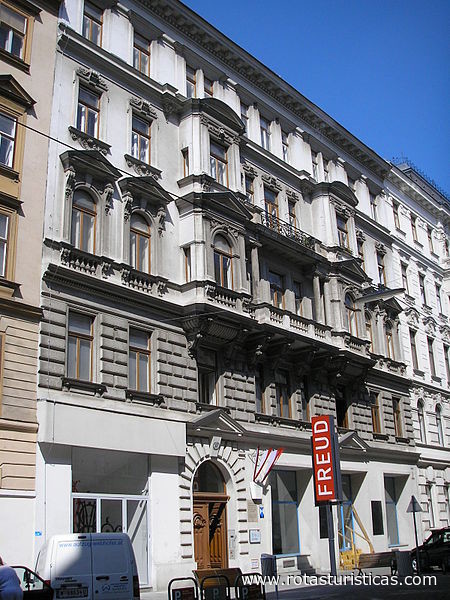 |
Imperial Furniture Collection |
| 1,5 Km |
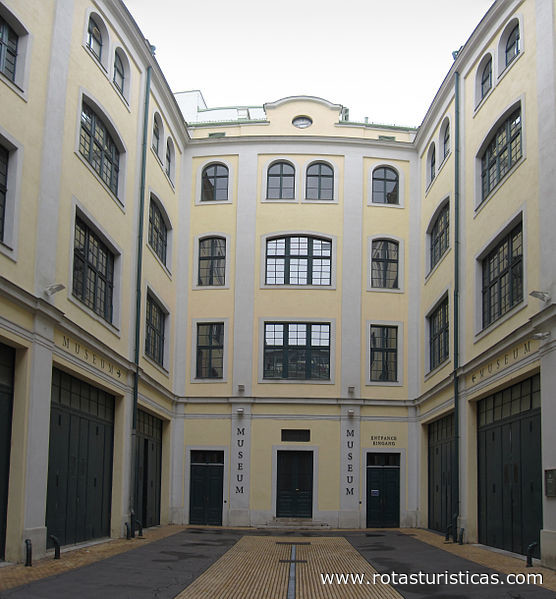 |
Josephinum (Viena) |
| 1,6 Km |
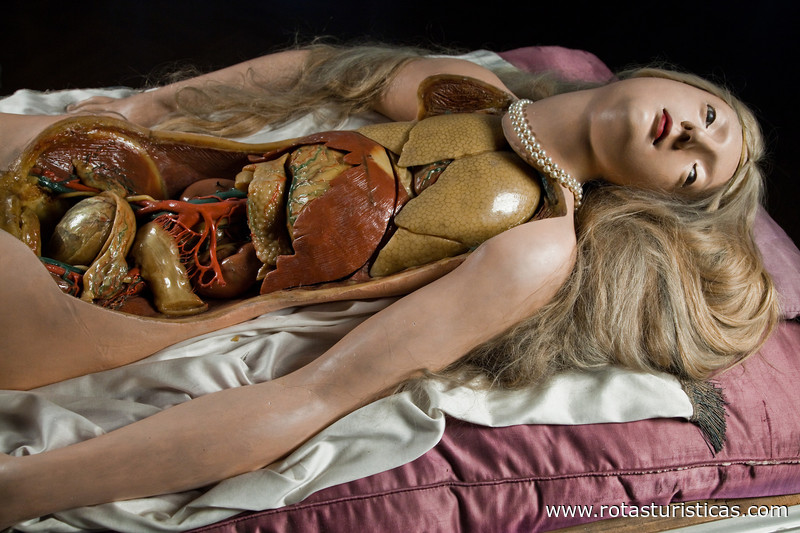 |
Westlicht Center For Photography (Viena) |
| 1,7 Km |
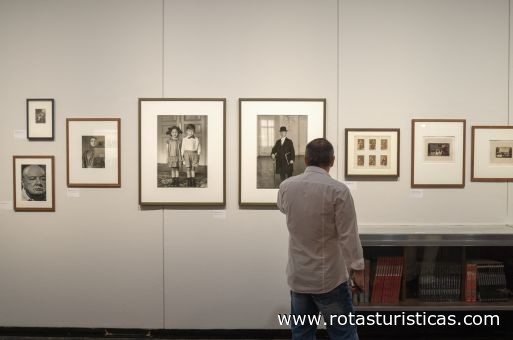 |
Crime Museum (Vienna) |
| 1,7 Km |
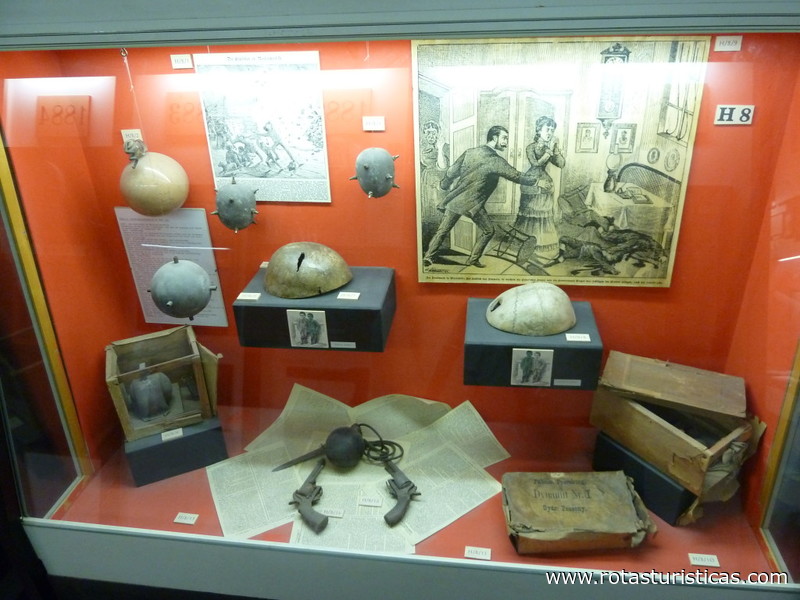 |
Vienna Crime Museum |
| 1,7 Km |
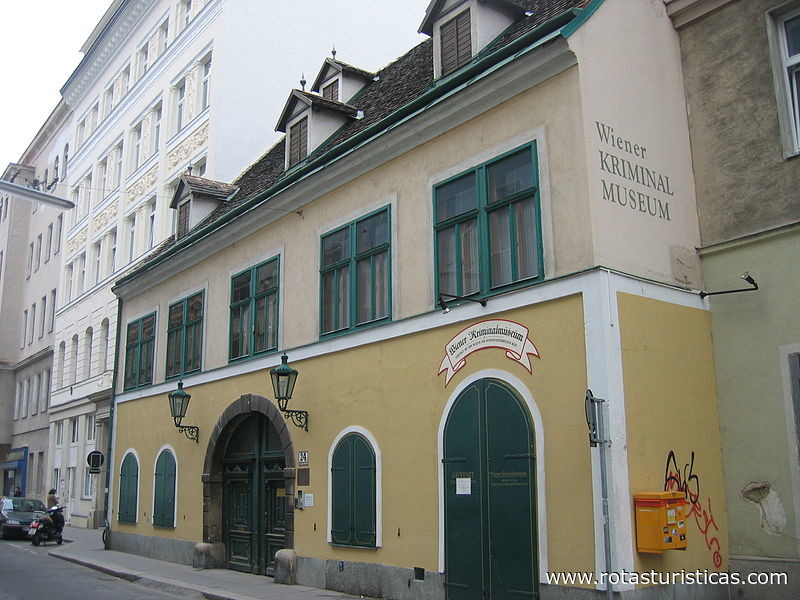 |
Vienna Shoe Museum (Viena) |
| 1,9 Km |
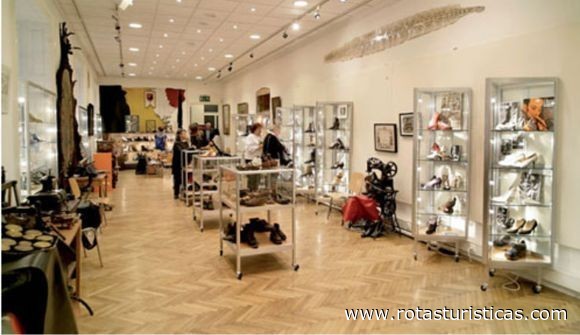 |
Liechtenstein Garden Palace (Viena) |
| 1,9 Km |
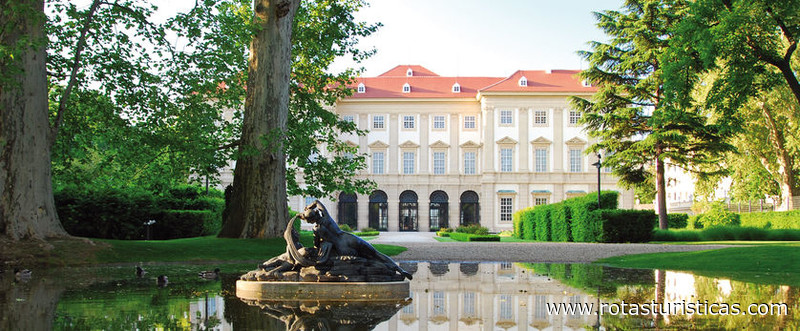 |
Funeral Museum Vienna |
| 2,0 Km |
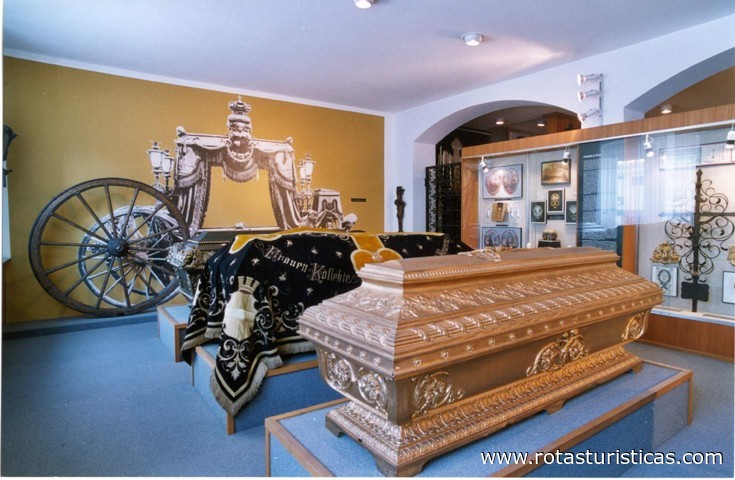 |
Augarten Porcelain Manufactory (Vienna) |
| 2,2 Km |
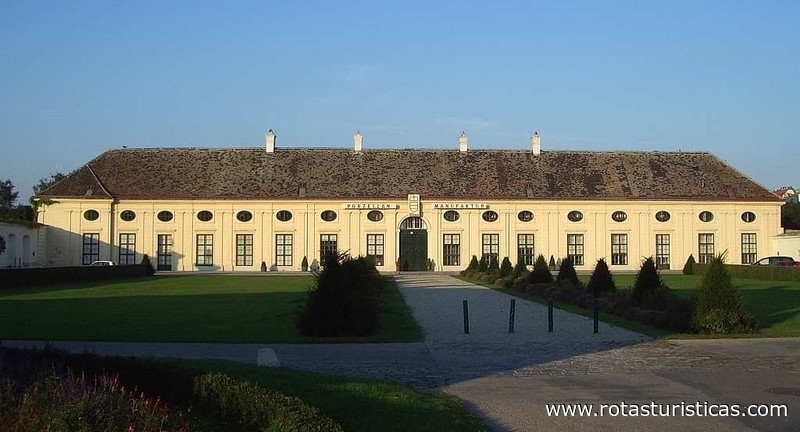 |
Kunsthauswien |
| 2,2 Km |
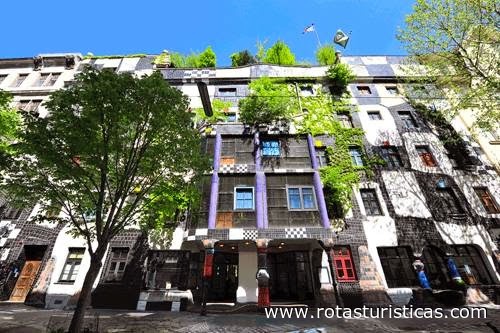 |
Hundertwasser House (Vienna) |
| 2,2 Km |
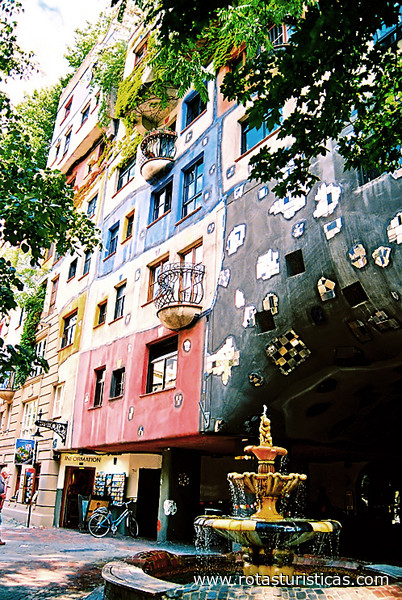 |
Wittgenstein House (Vienna) |
| 2,2 Km |
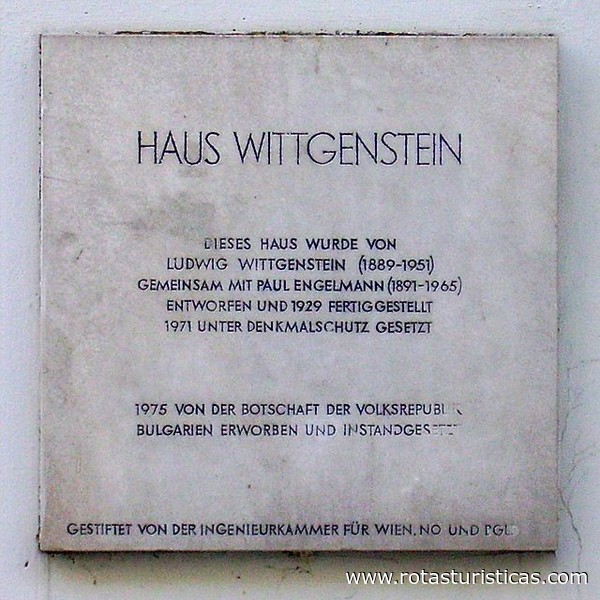 |
Austrian Society and Economic Museum |
| 2,5 Km |
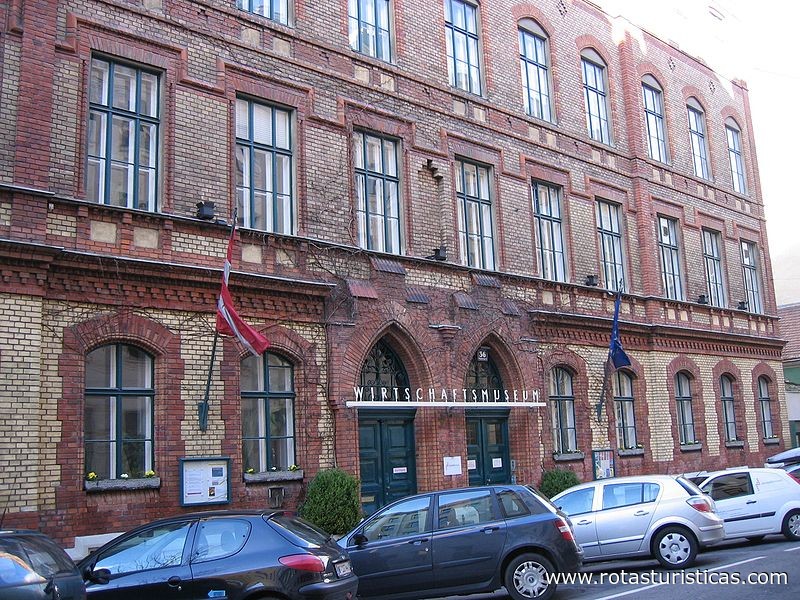 |
Prater Museum (Viena) |
| 2,5 Km |
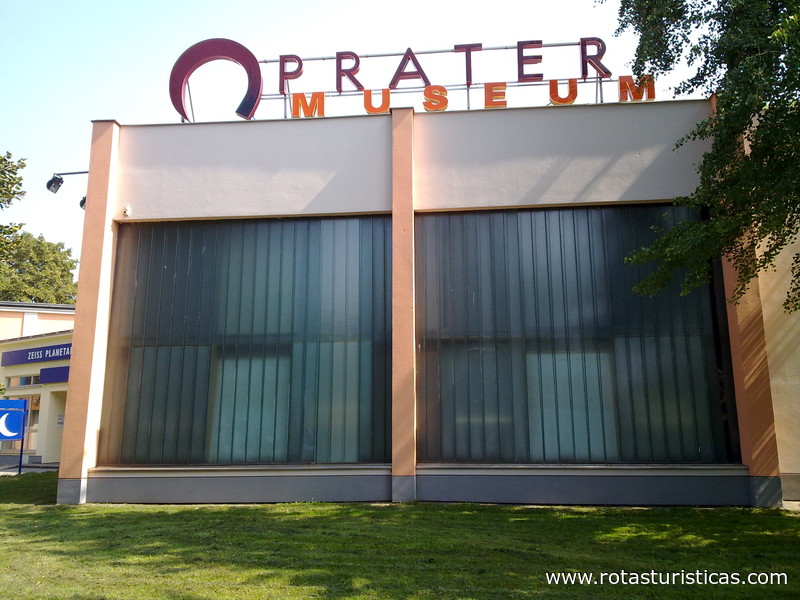 |
Zeiss Planetarium Vienna |
| 2,5 Km |
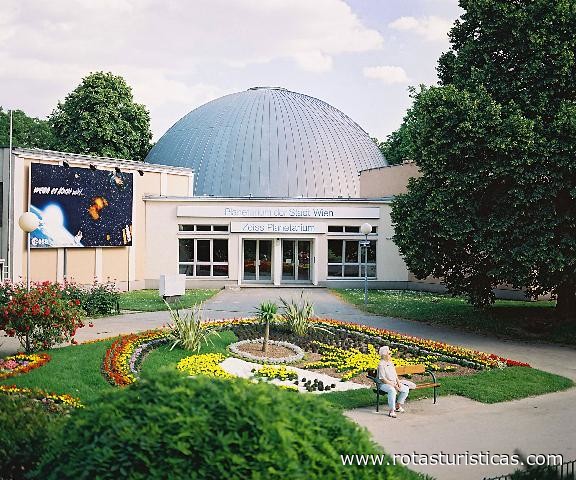 |
The Giant Ferris Wheel And Its Square (Viena) |
| 2,7 Km |
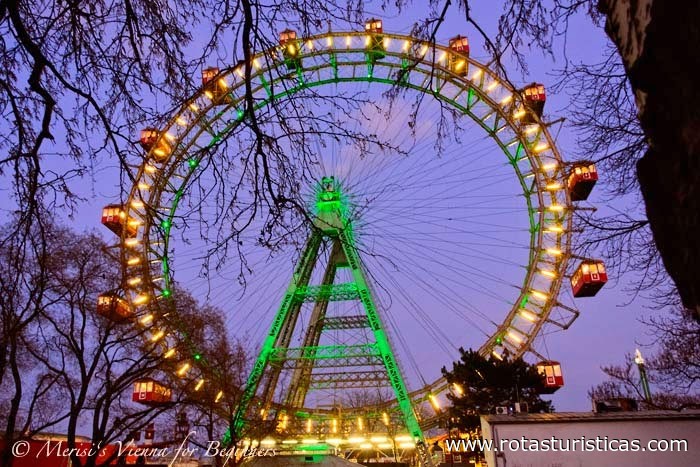 |
Madame Tussauds (Viena) |
| 2,7 Km |
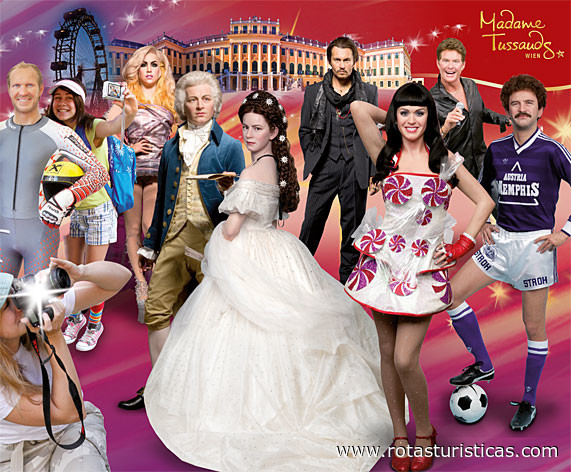 |
Museum of Military History of Vienna |
| 2,8 Km |
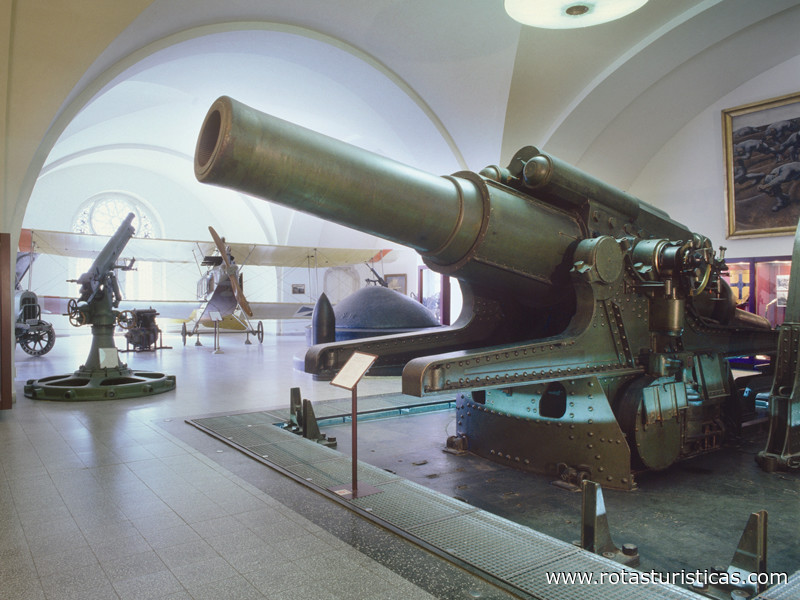 |
Museum of Military History |
| 3,0 Km |
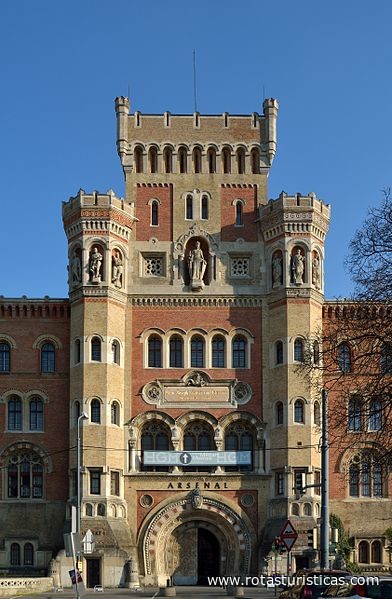 |
Vienna Streetcar Museum (Vienna) |
| 3,4 Km |
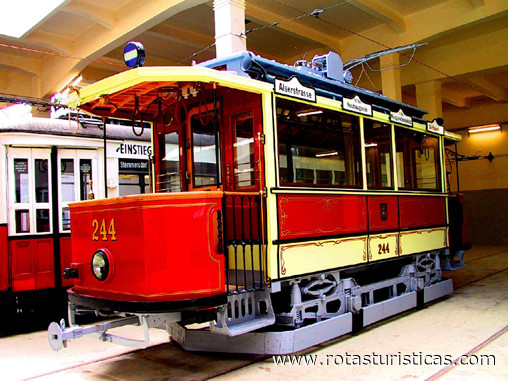 |
St. Marx Cemetery (Vienna) |
| 3,7 Km |
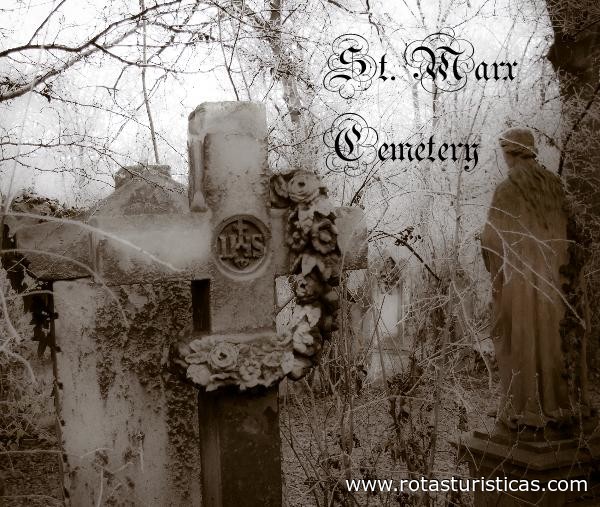 |
Old Vienna Schnapsmuseum (Viena) |
| 3,8 Km |
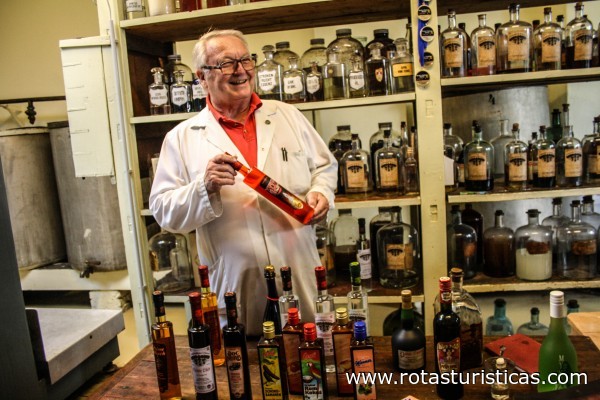 |
Technical Museum Vienna |
| 3,8 Km |
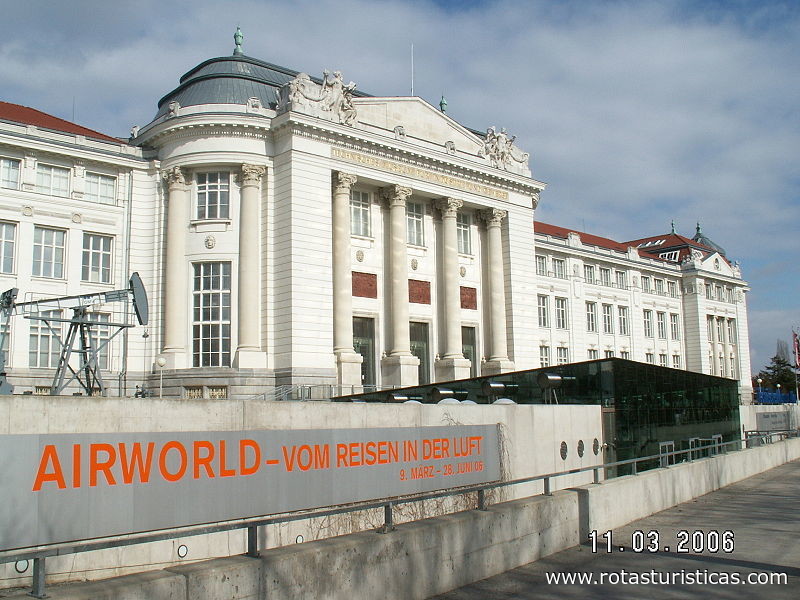 |
Schönbrunn Castle |
| 4,5 Km |
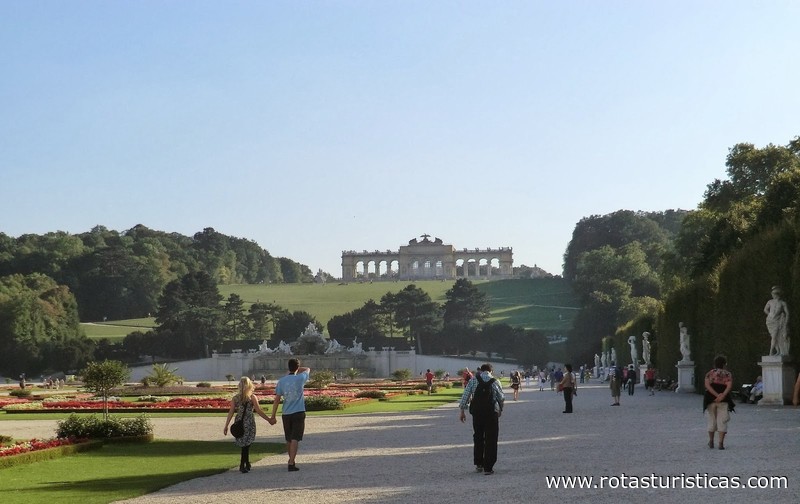 |
Otto Wagner Court Pavilion Hietzing (Vienna) |
| 4,8 Km |
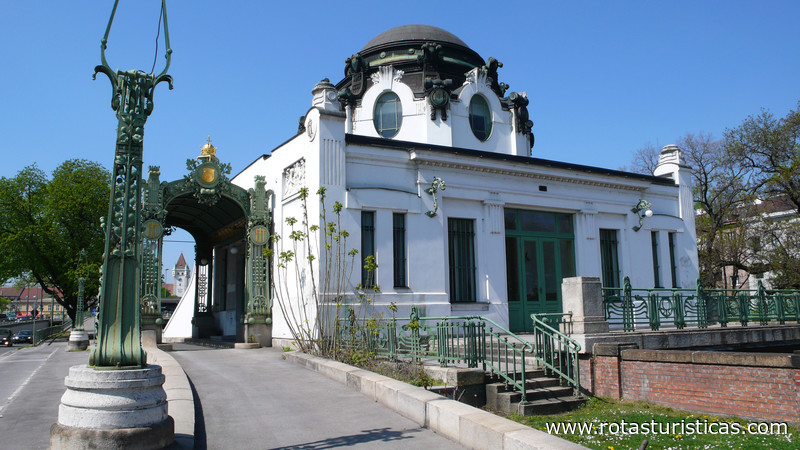 |
Museum in The Laundry Room (Viena) |
| 5,0 Km |
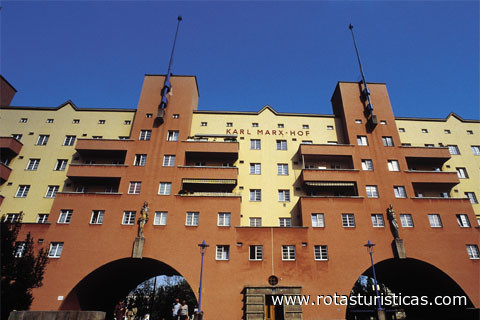 |
Islamic Center - Mosque (Vienna) |
| 5,0 Km |
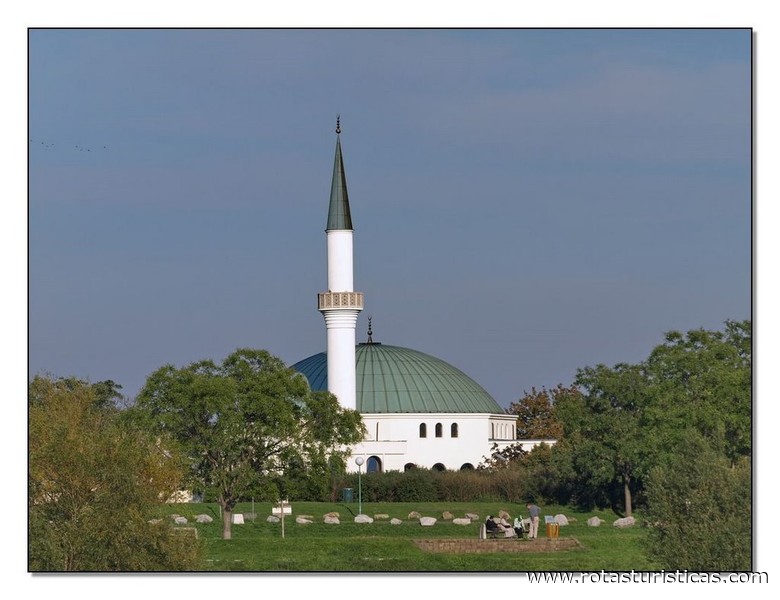 |
Danube Tower (Vienna) |
| 5,1 Km |
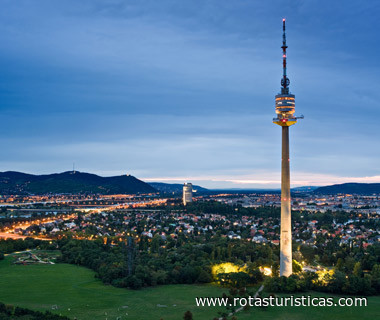 |
Schönbrunn Zoo (Vienna) |
| 5,3 Km |
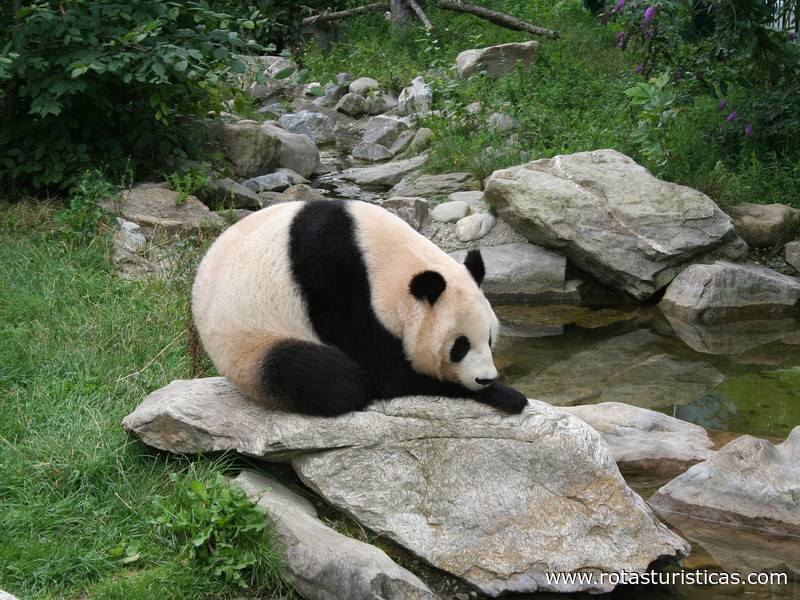 |
Kuffner Observatory (Vienna) |
| 5,5 Km |
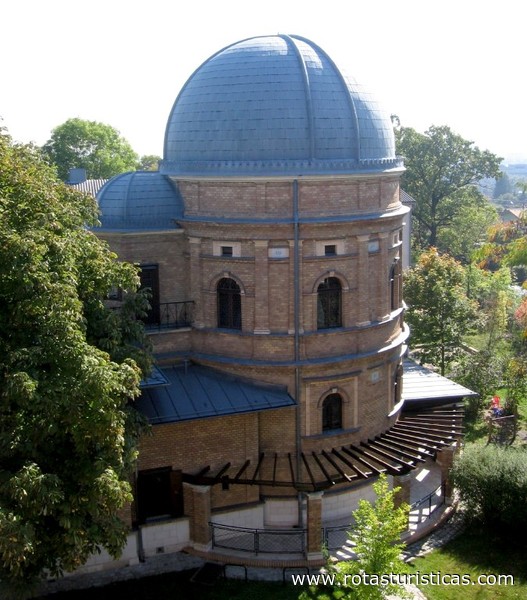 |
Ernst Fuchs Museum (Vienna) |
| 8,1 Km |
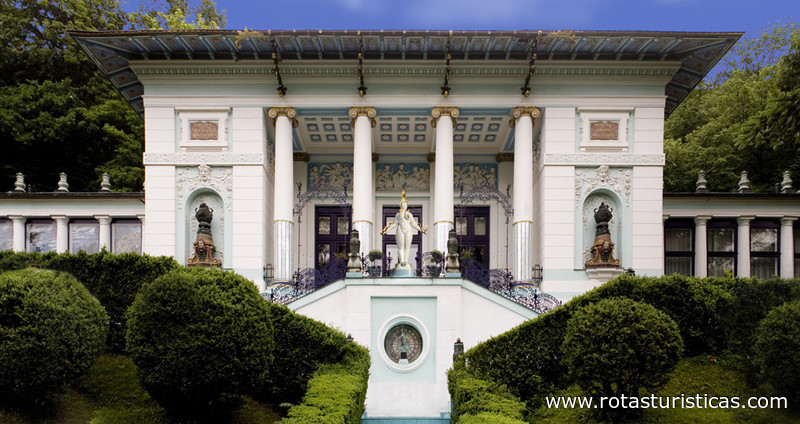 |
Hermesvilla |
| 9,6 Km |
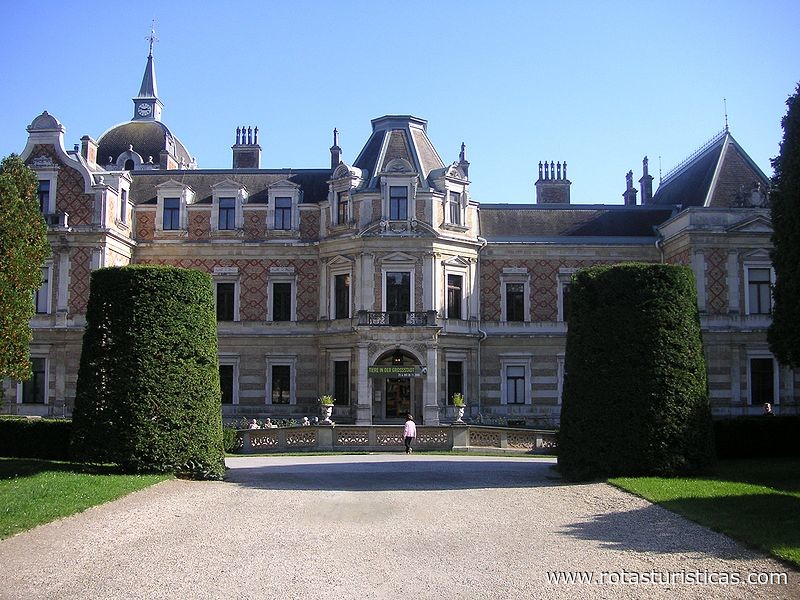 |
Essl Museum Kunst Der Gegenwart |
| 11,0 Km |
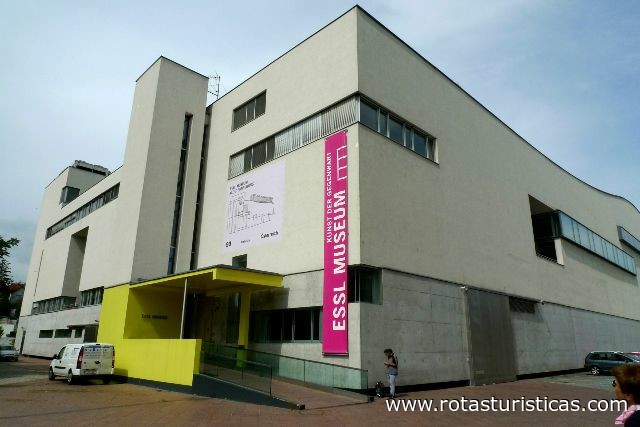 |
Essl Museum - Art of The Present (Klosterneuburg) |
| 11,0 Km |
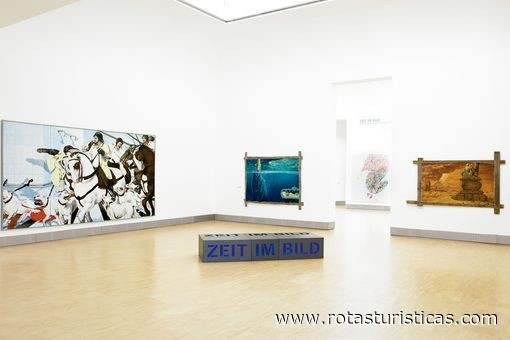 |
Cemetery of The Nameless (Viena) |
| 11,4 Km |
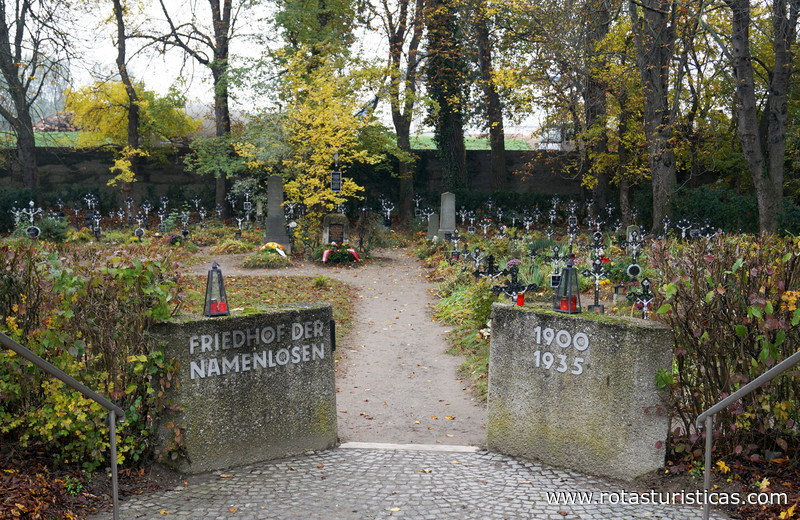 |
Kreuzenstein Castle |
| 19,7 Km |
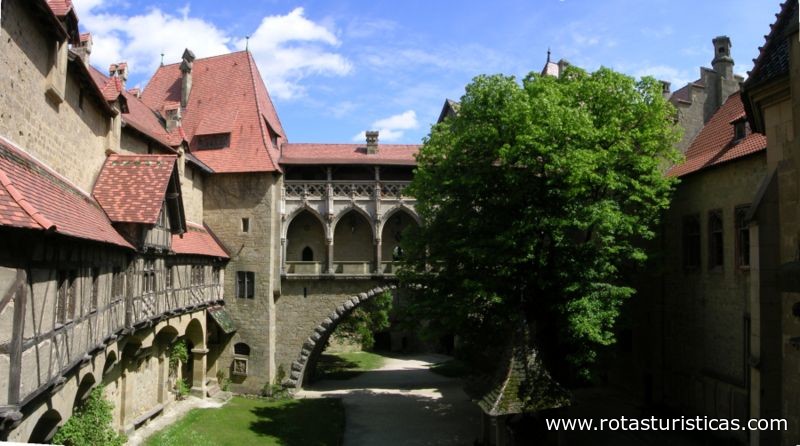 |
Hotel reservation near new Castle within a radius of 20 km
Why to book with BOOK HOTEL ALGARVE
The best prices
Our partnerships with the world´s largest operators offer research on the best market prices.
More options
At Rotas Turisticos you can book the hotel, buy the air ticket, book the transfer from the airport to the hotel and vice versa, book the local excursions, rent the car, take travel insurance and consult the places to visit and where to go.
Holiday Tips & Destinations
Hundreds of holiday destinations with all the options that allow you to easily choose the destination that best suits your dream vacation.
BOOK HOTEL ALGARVE
Links


